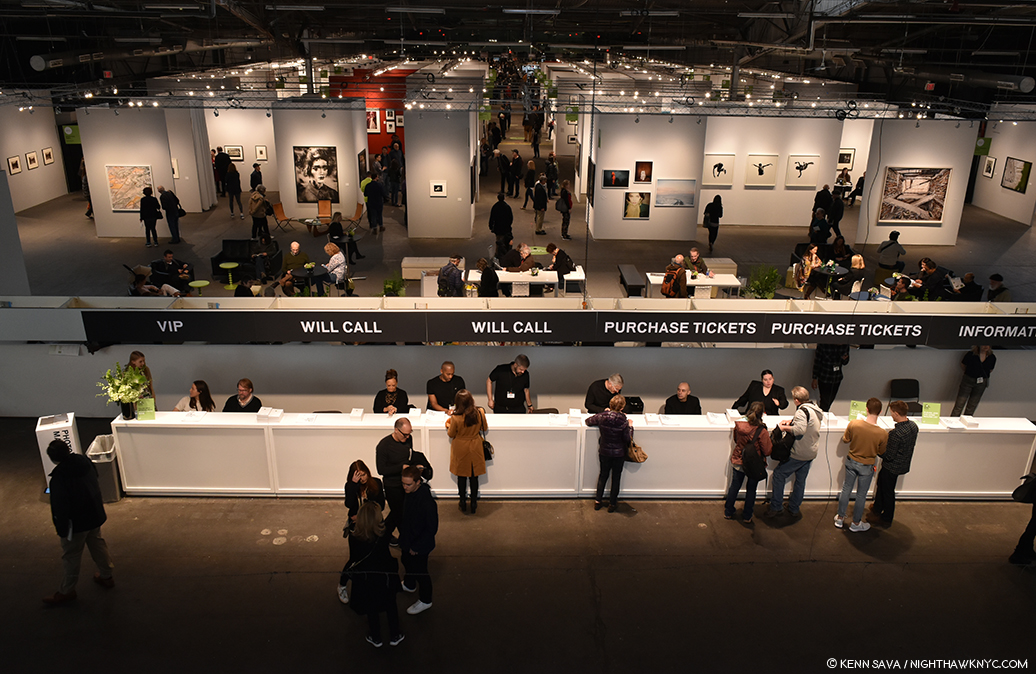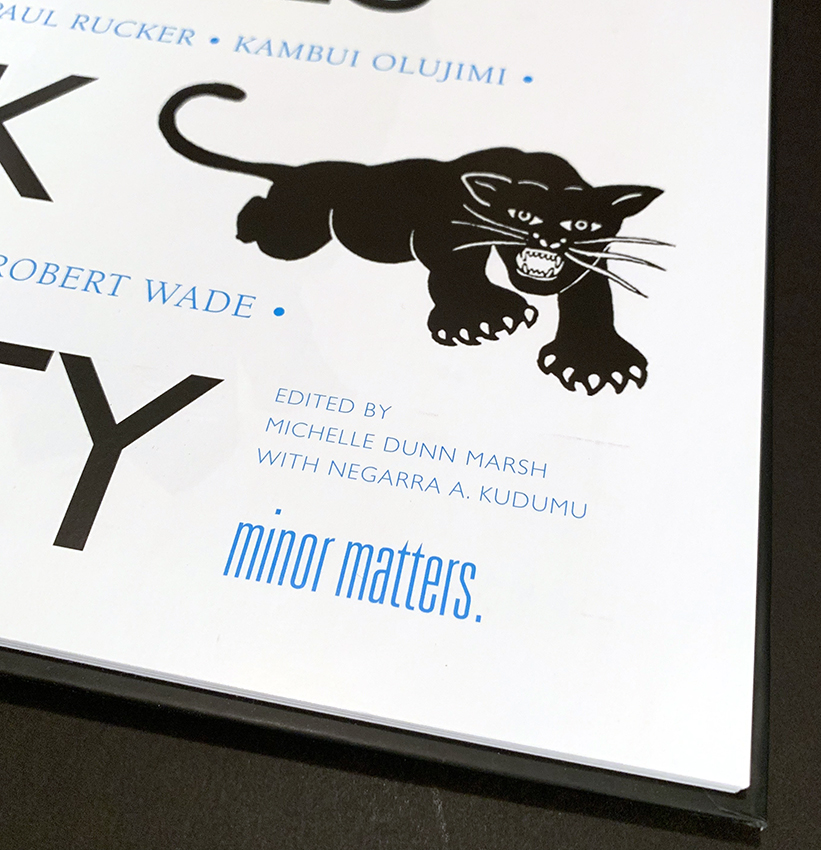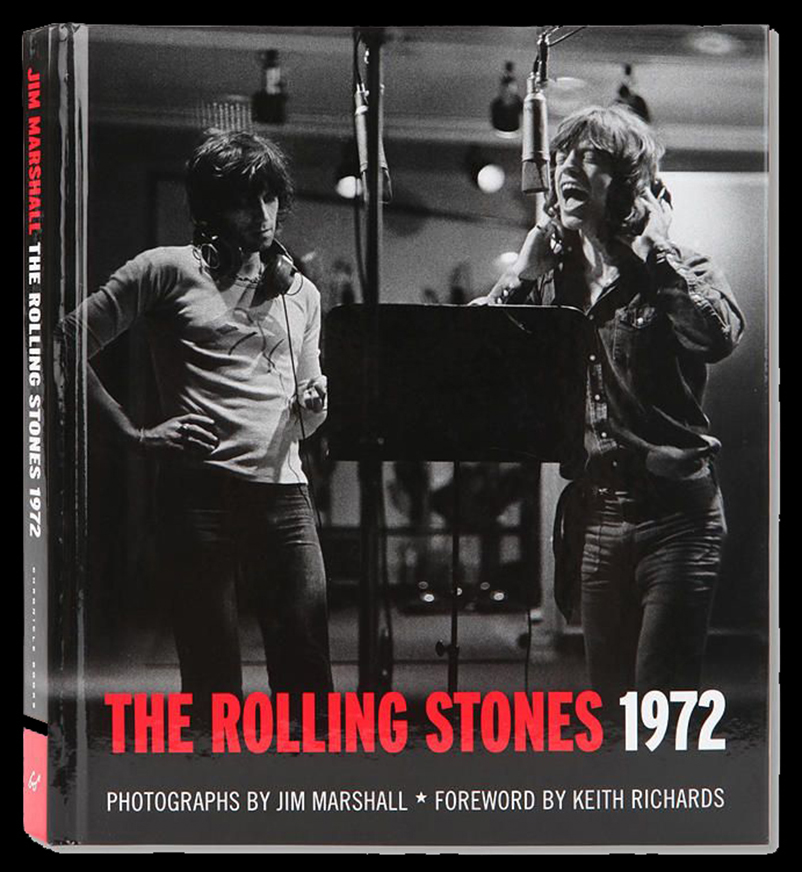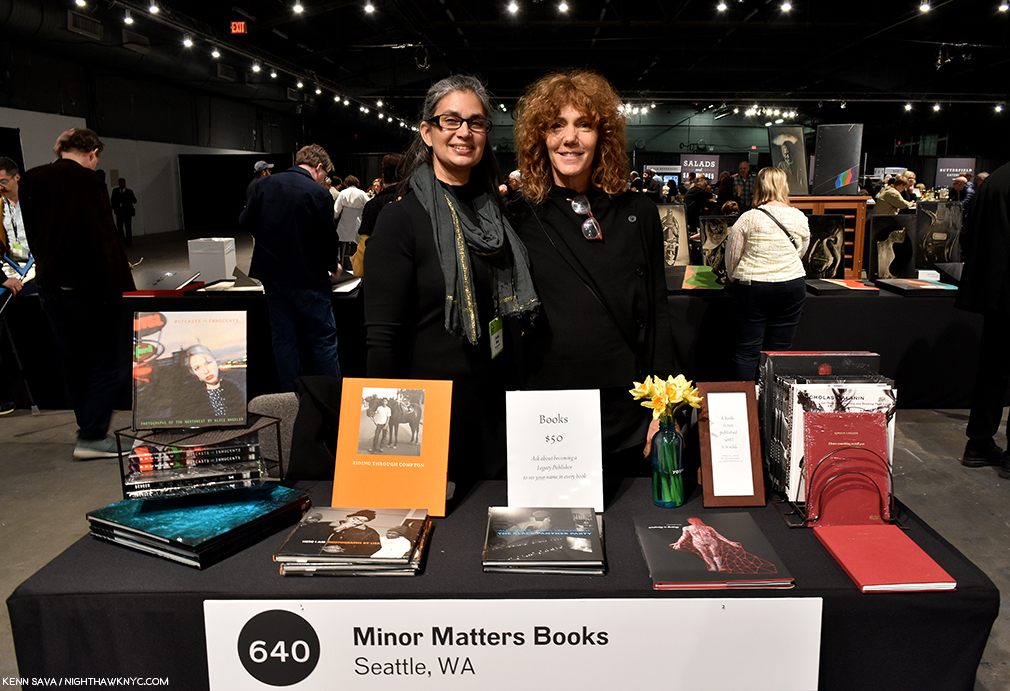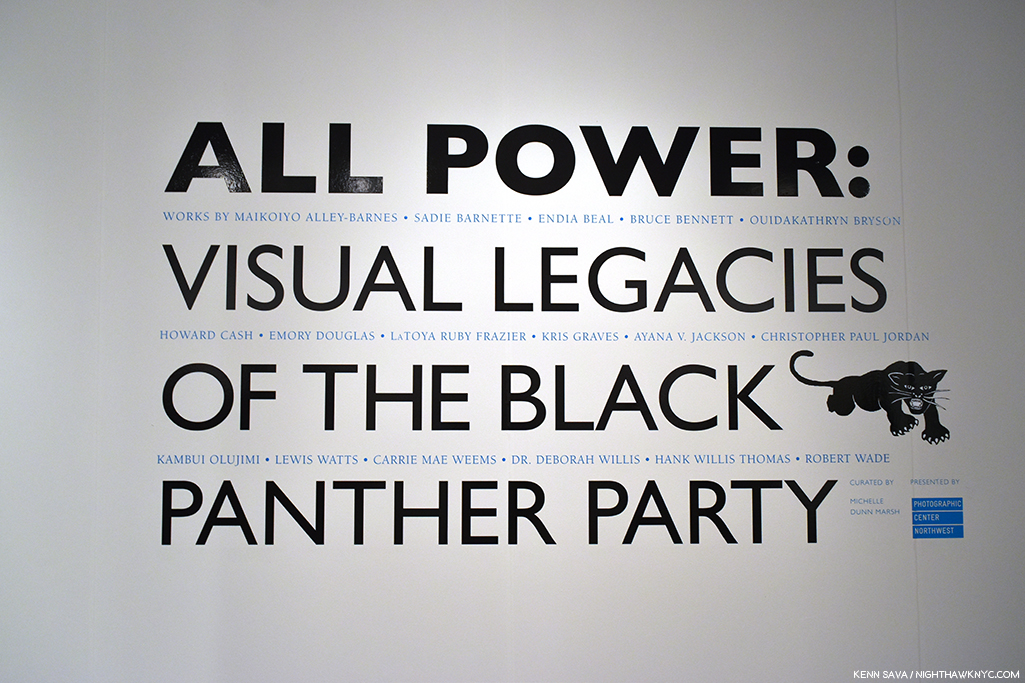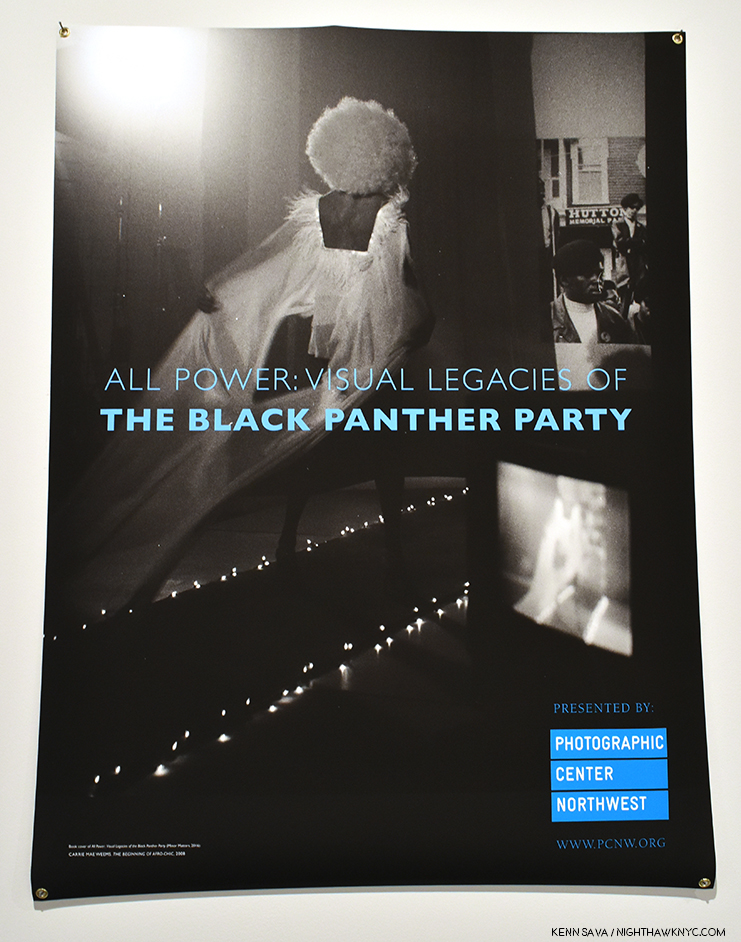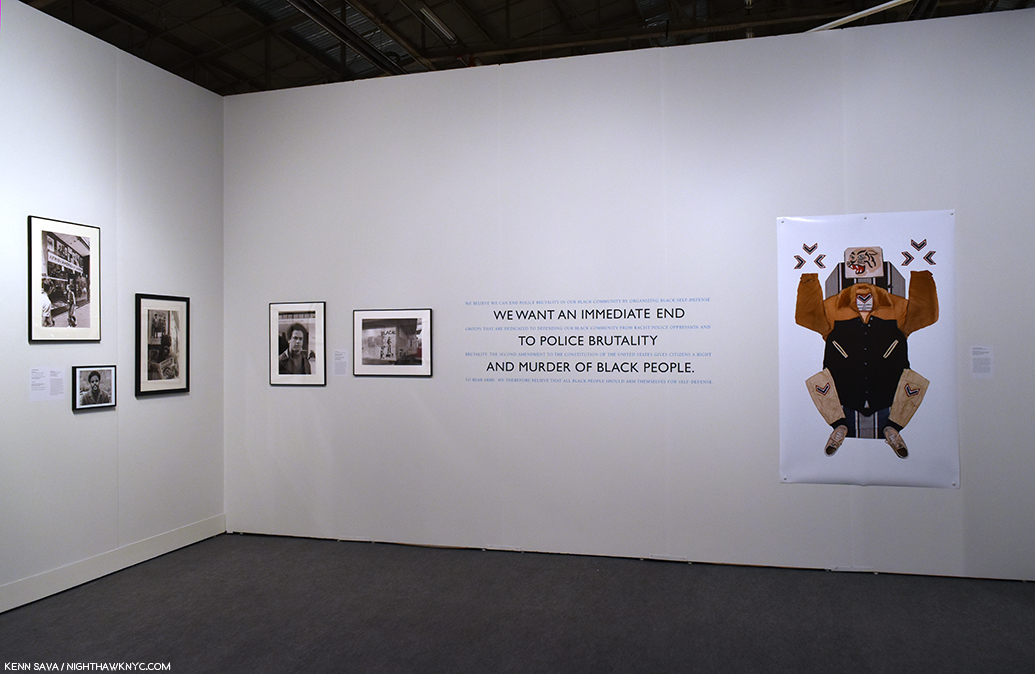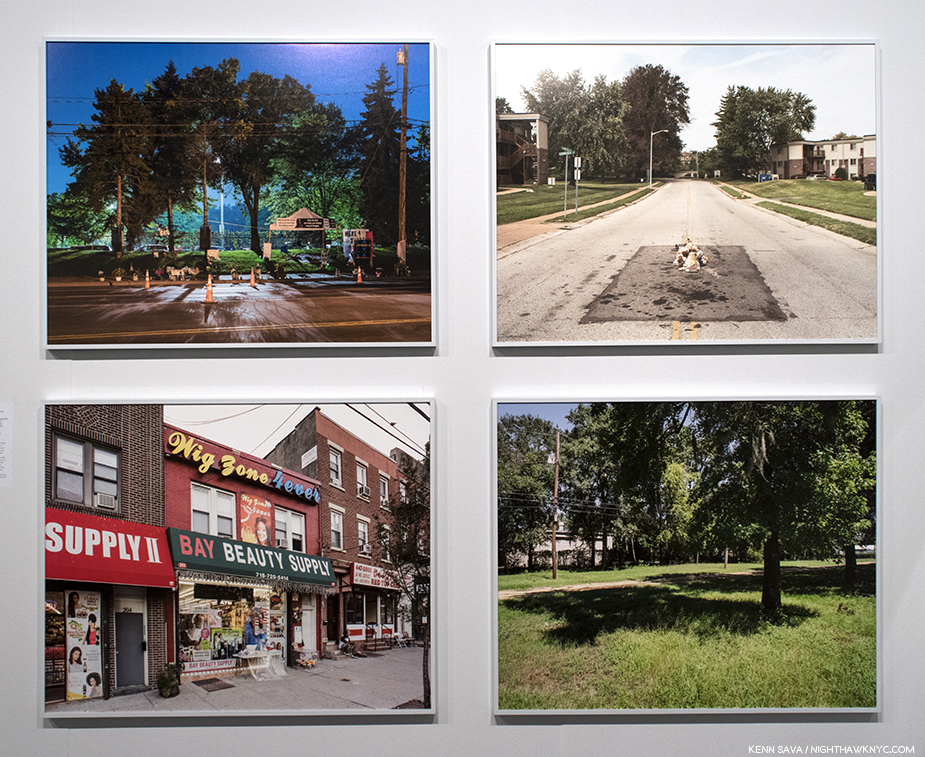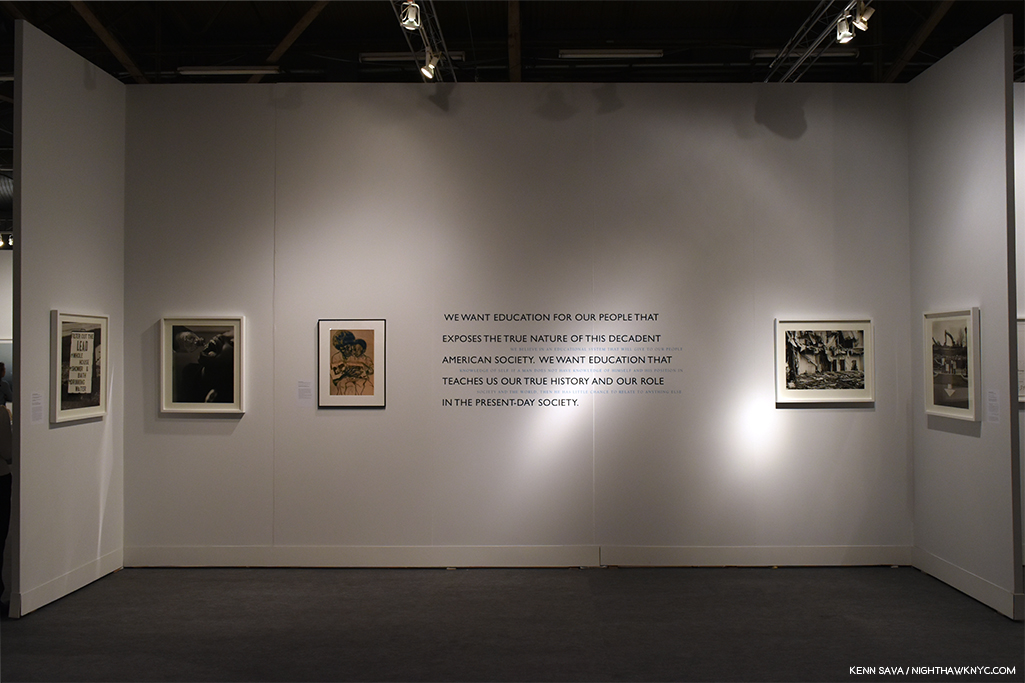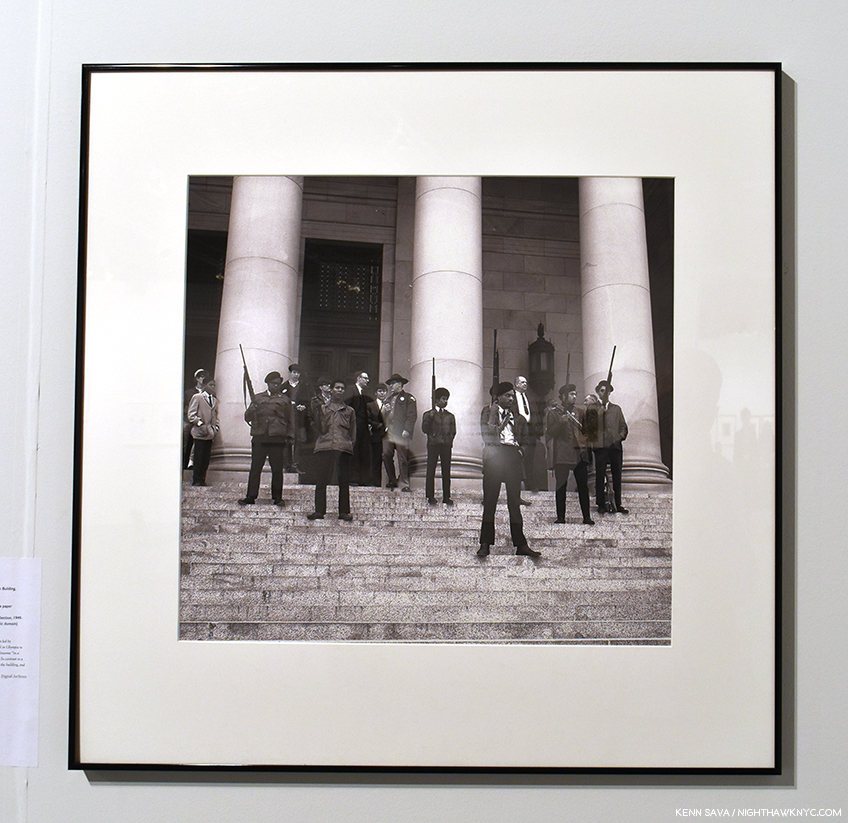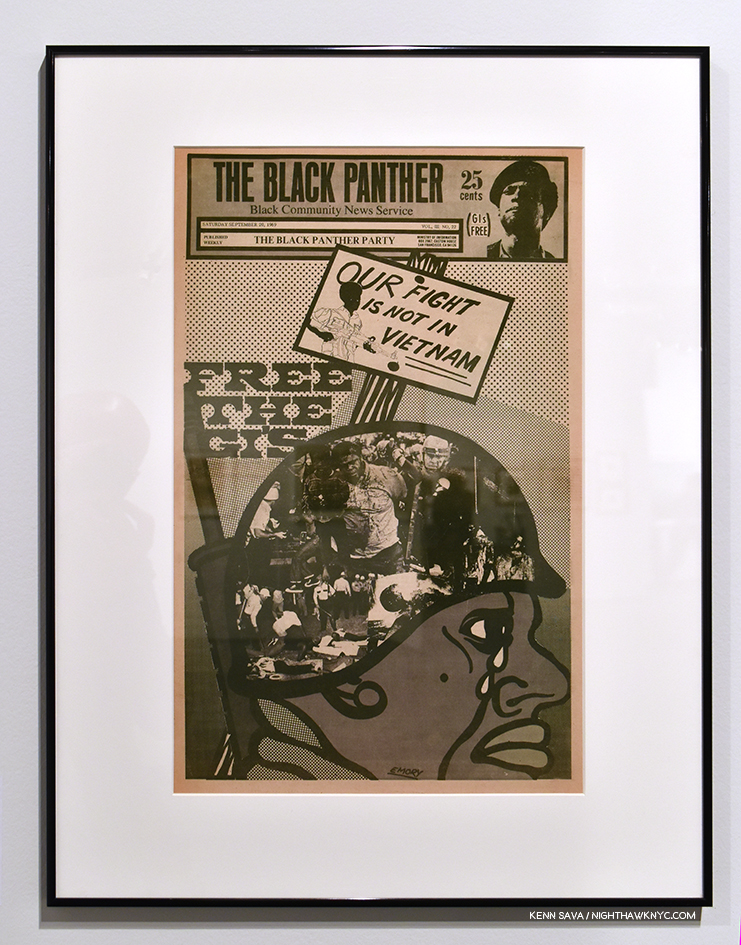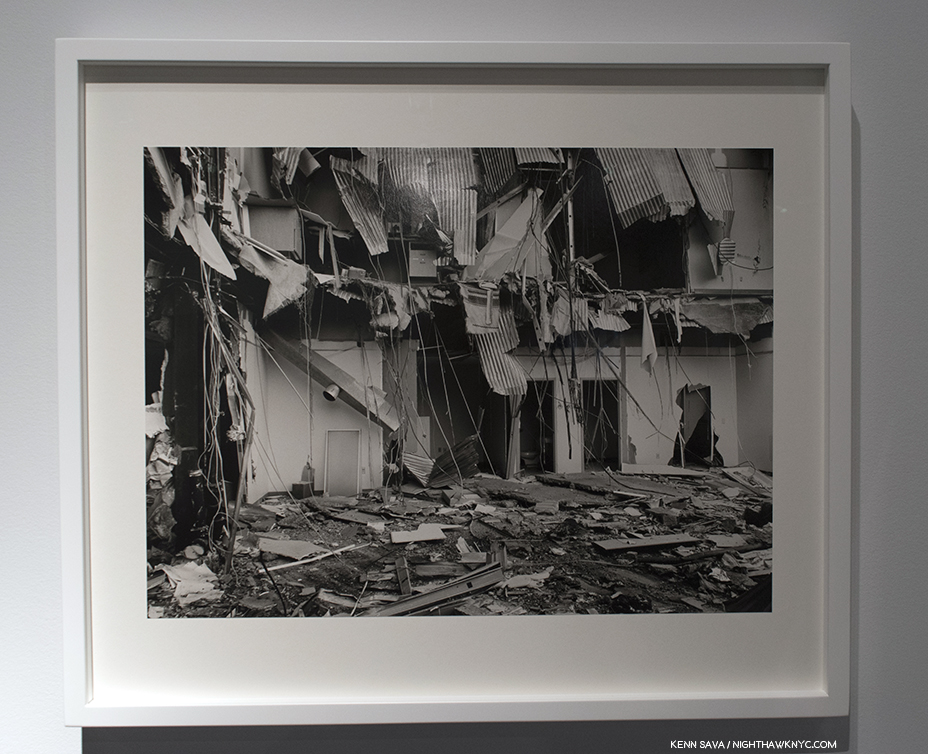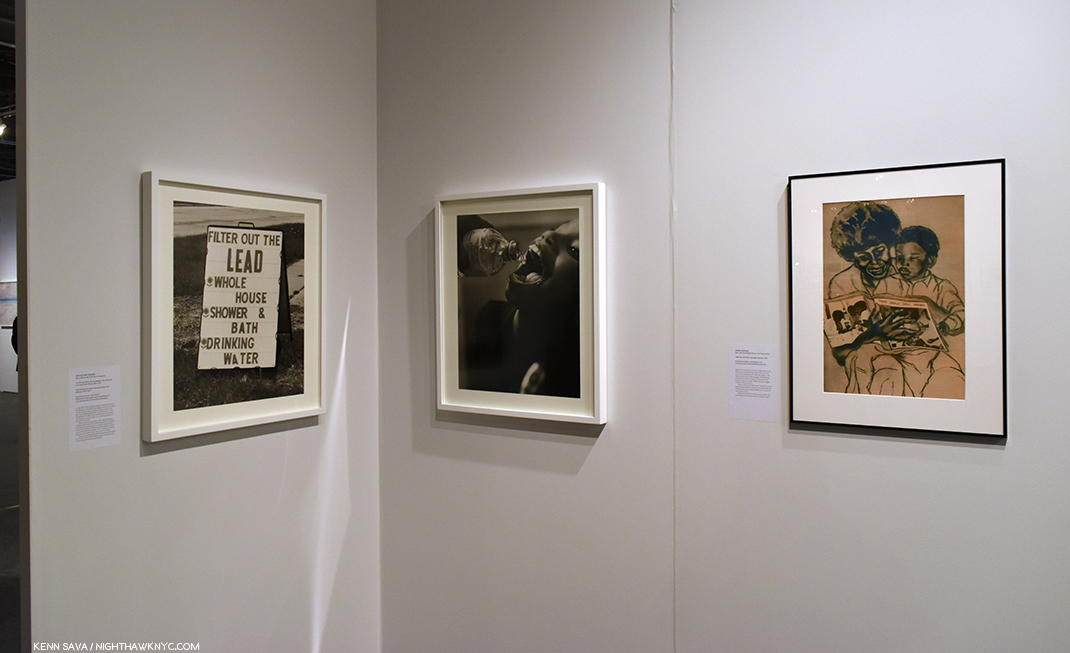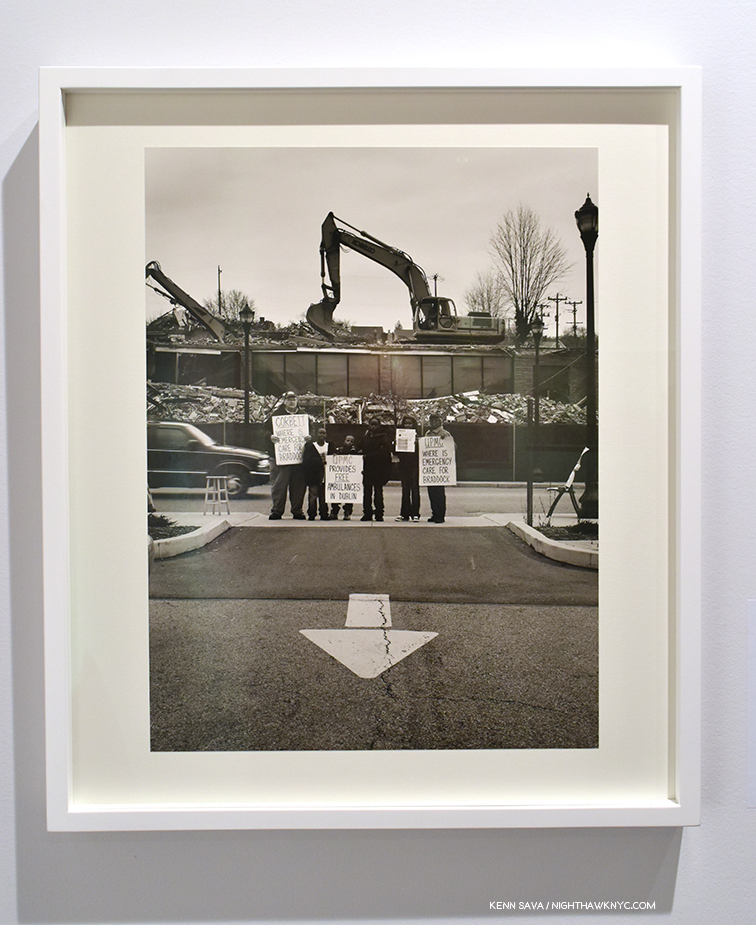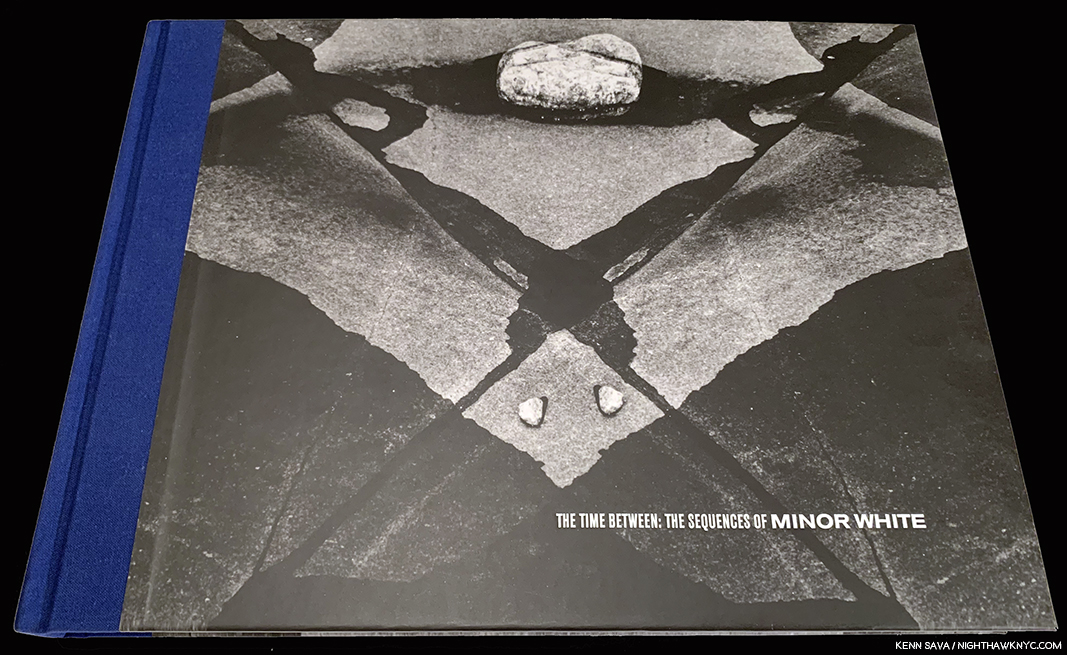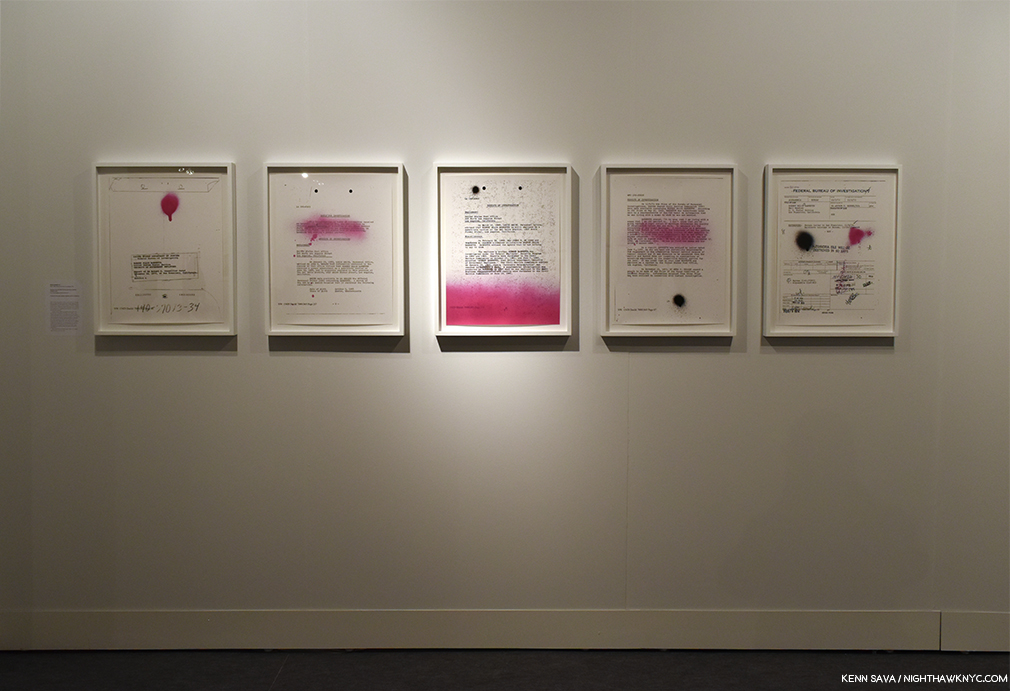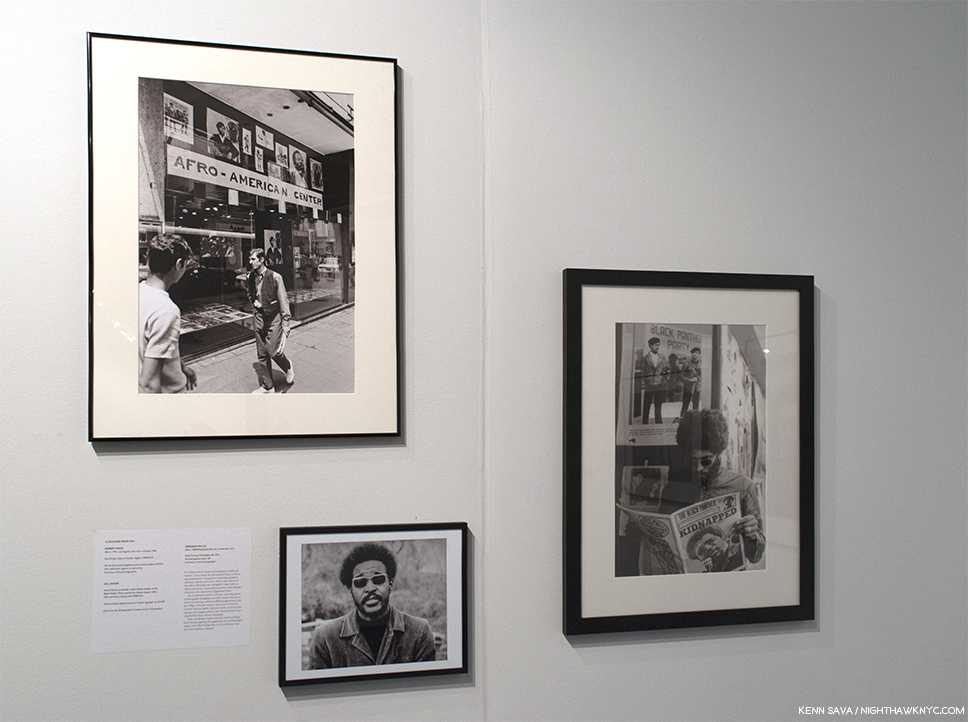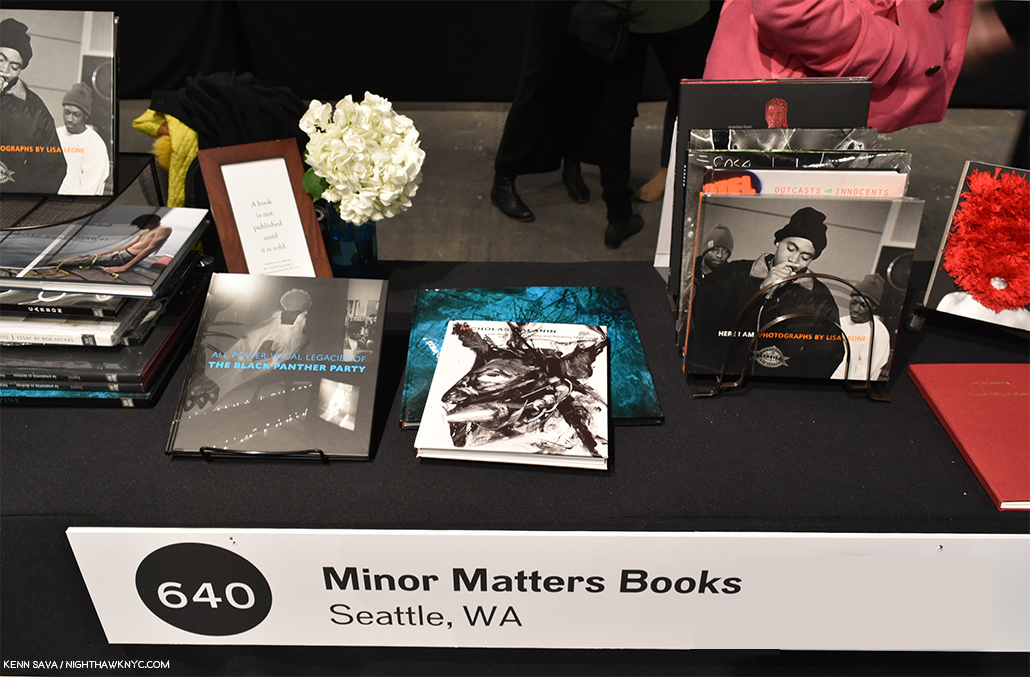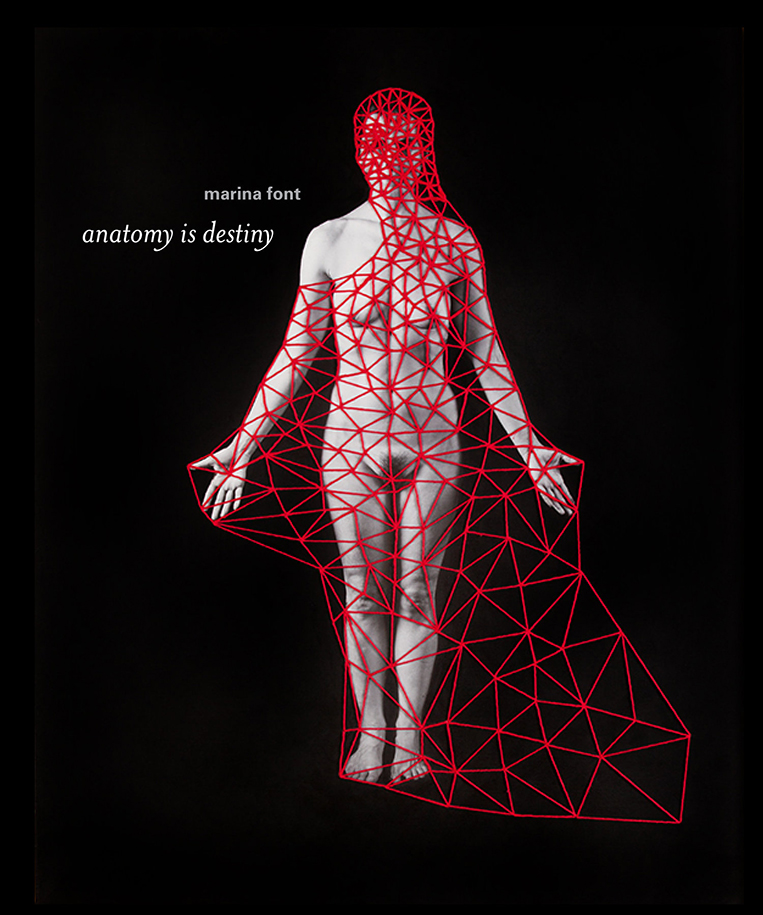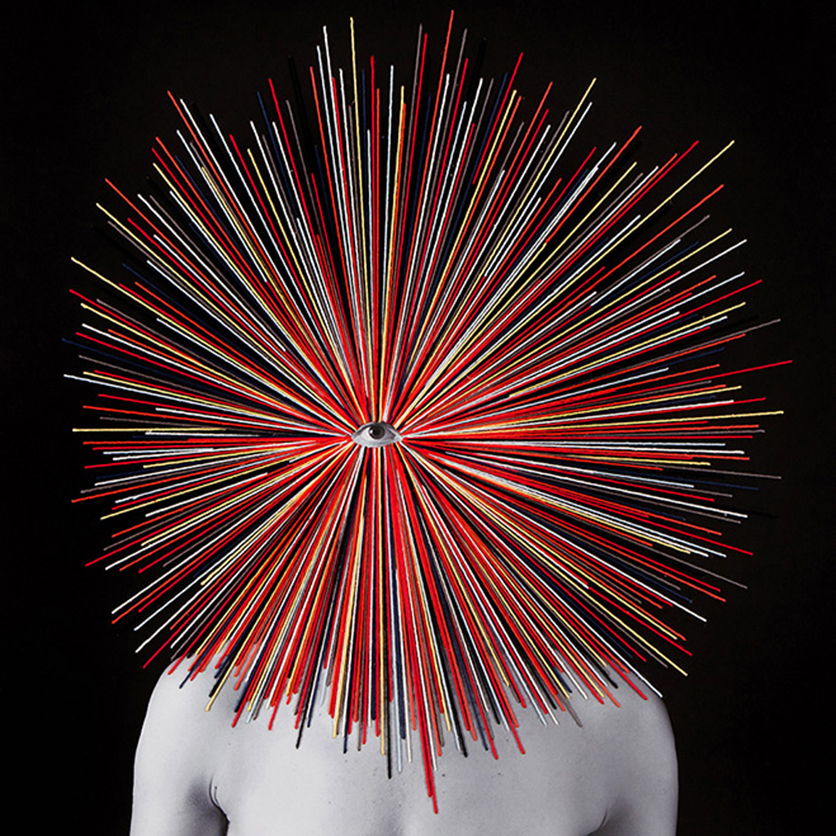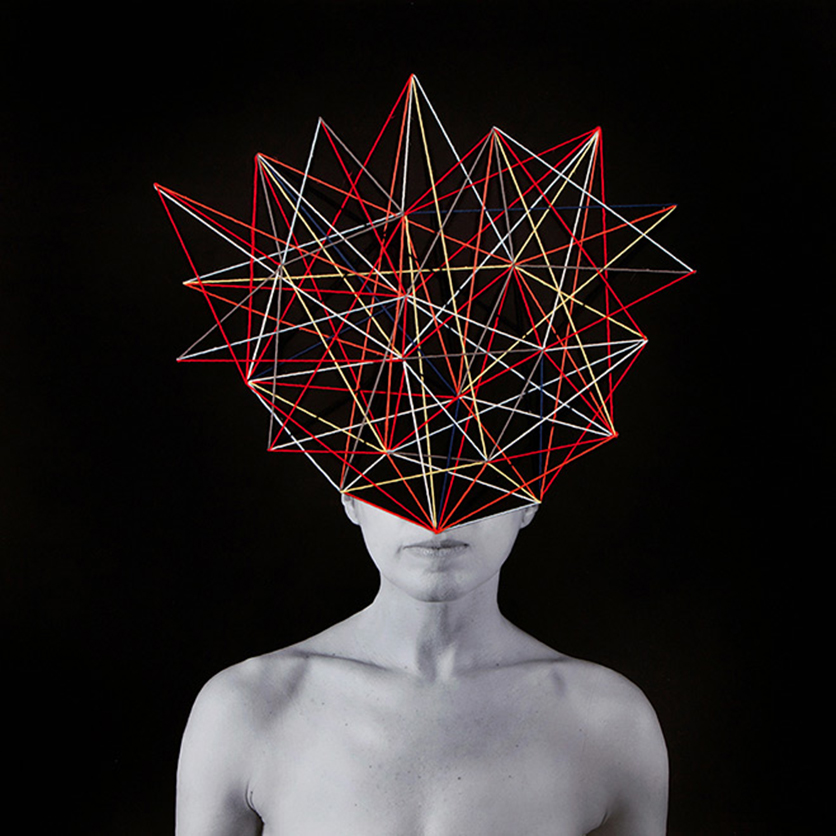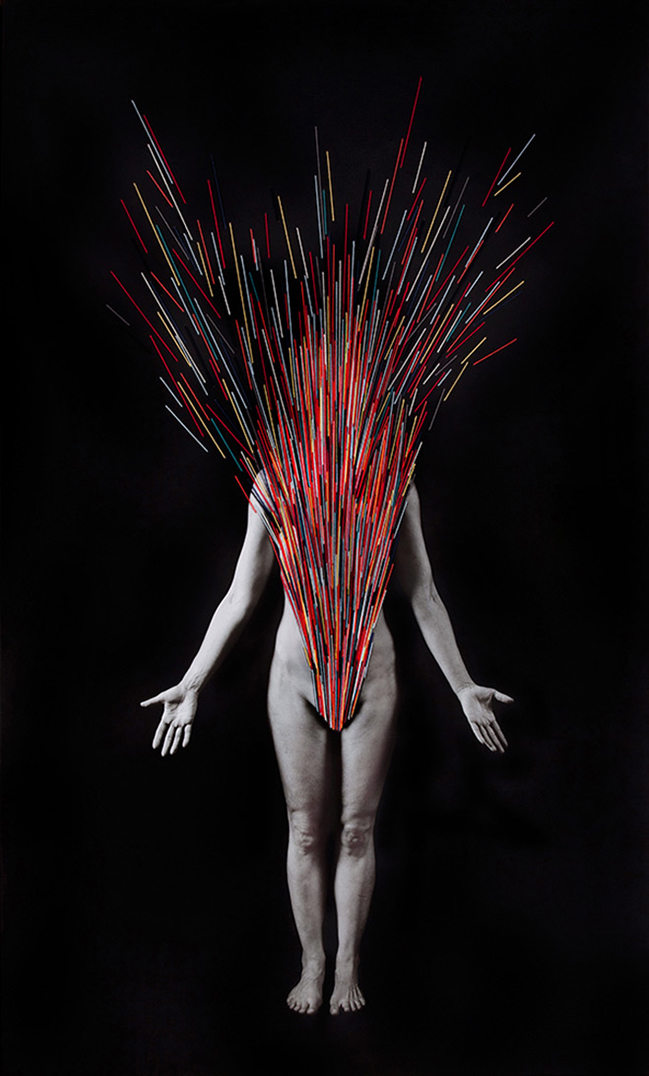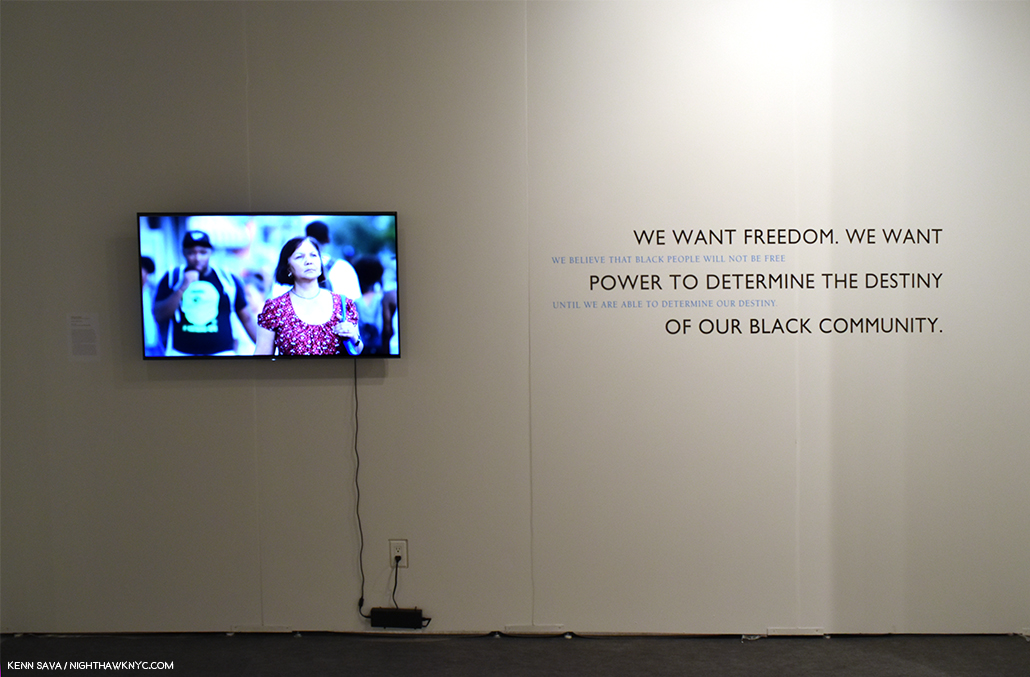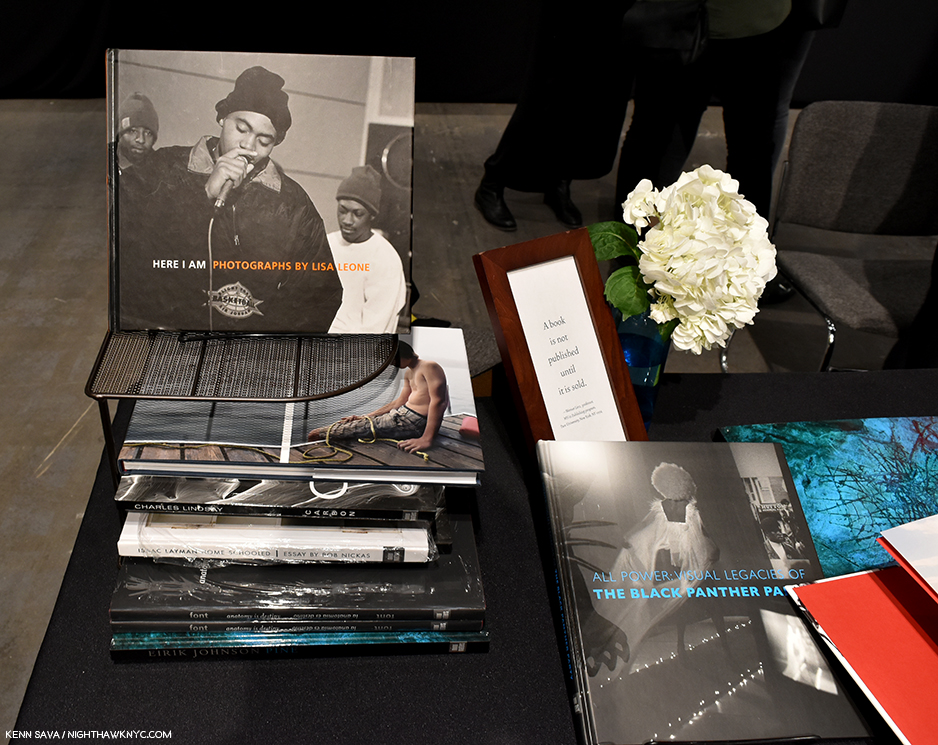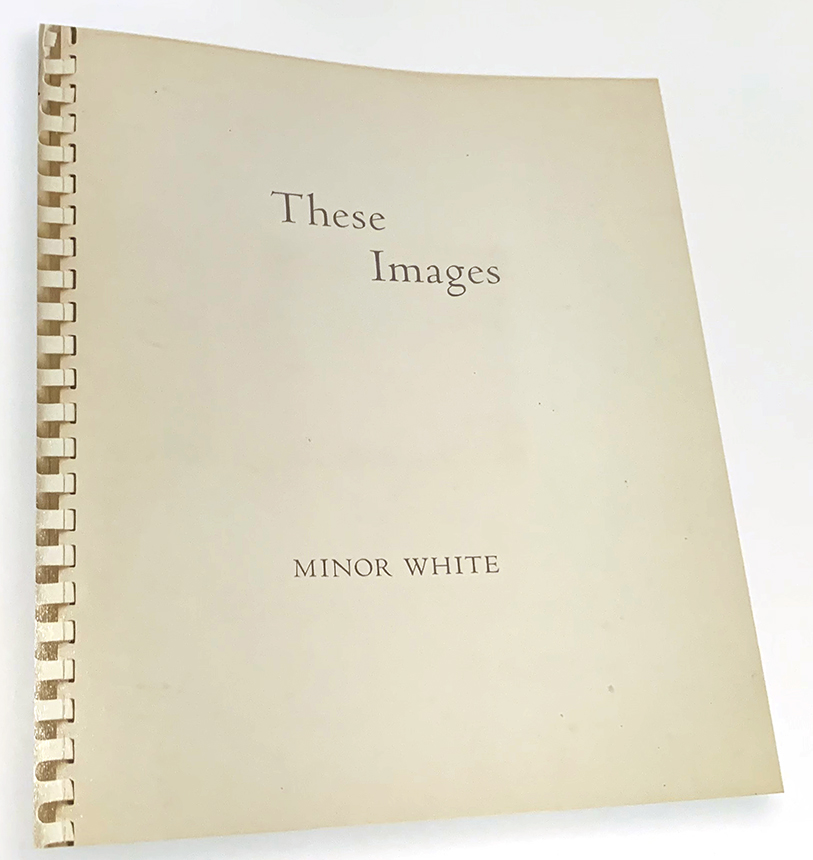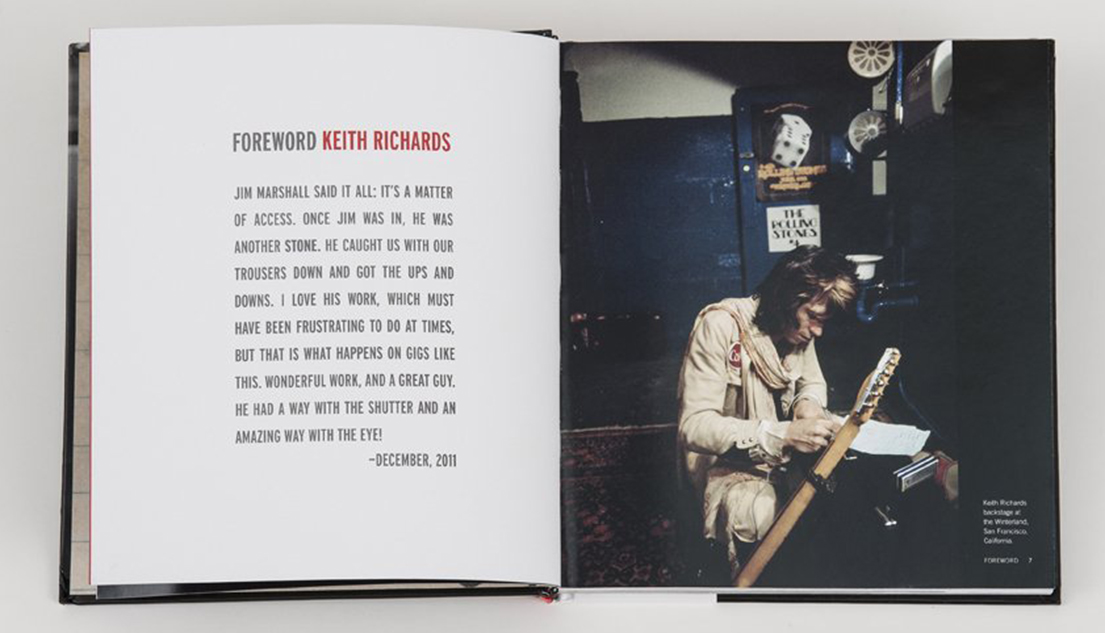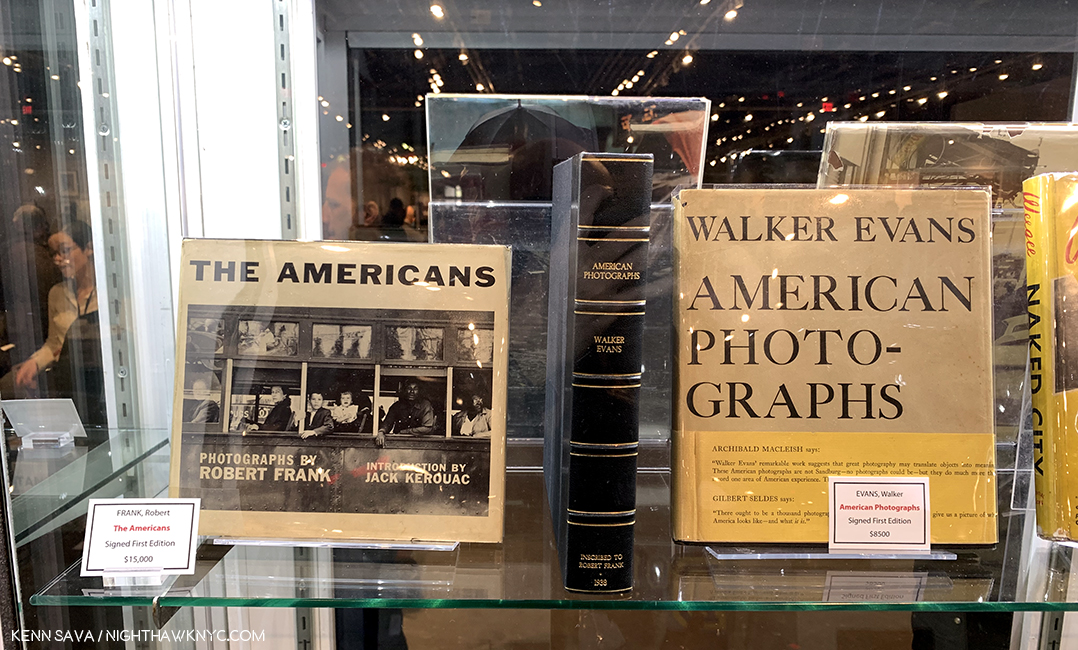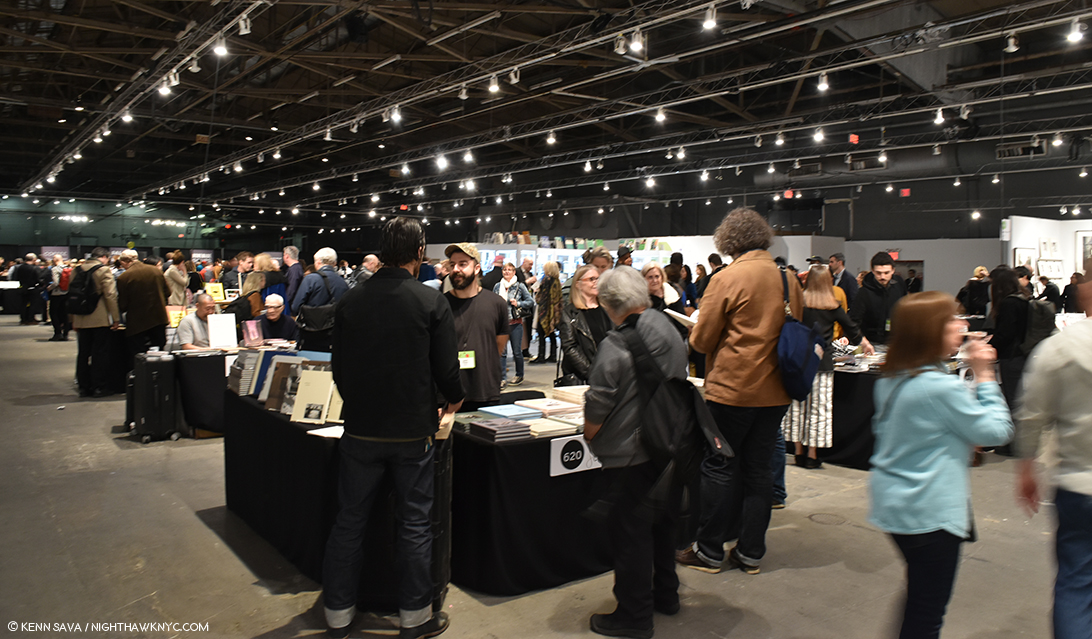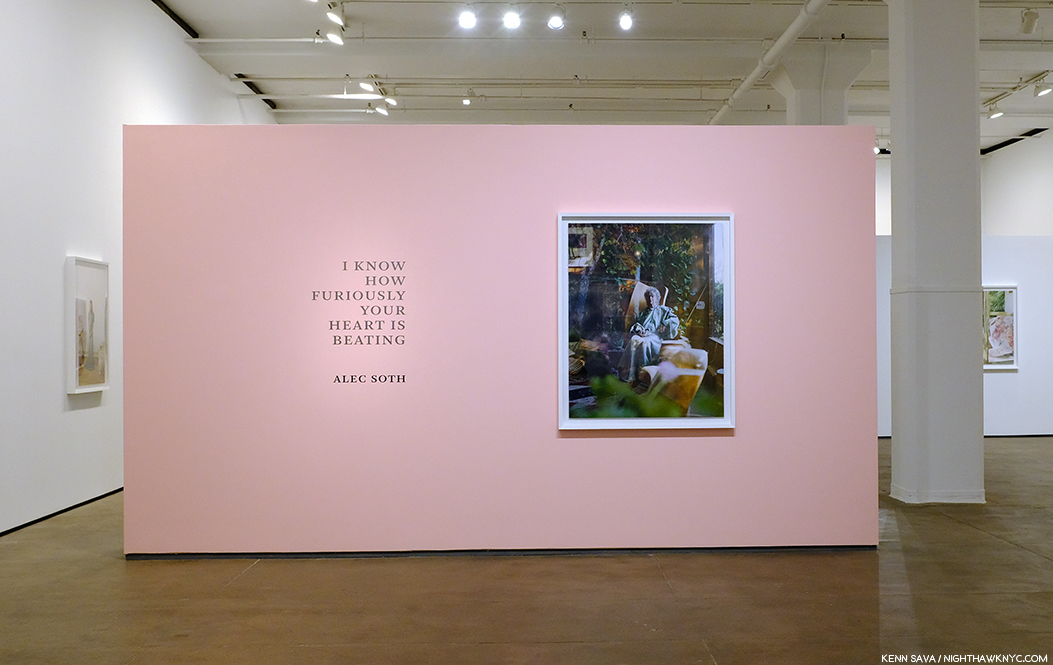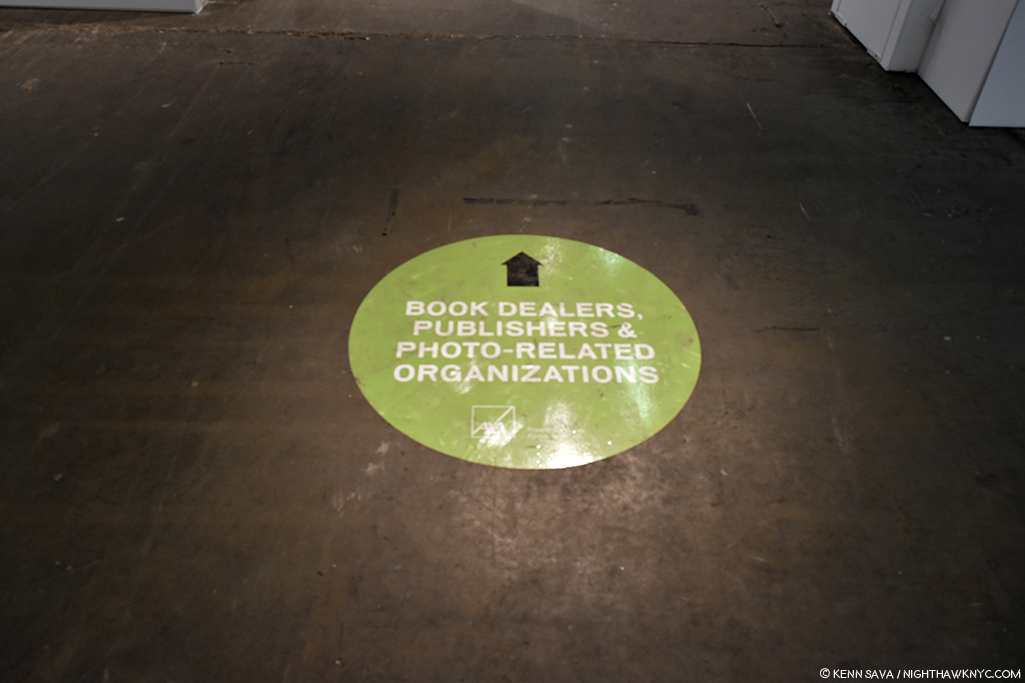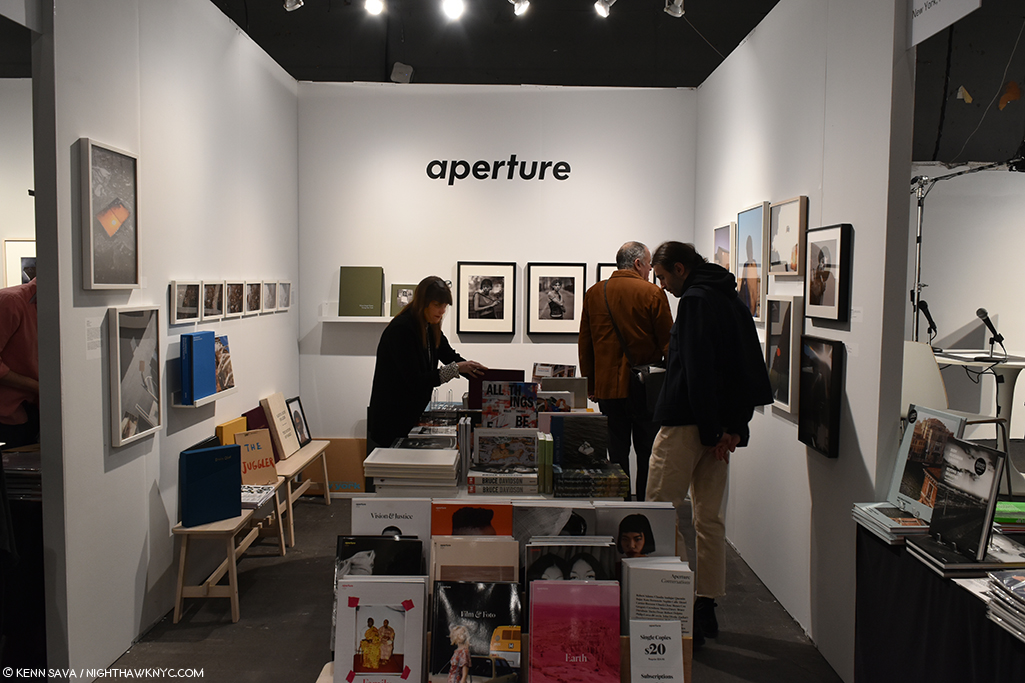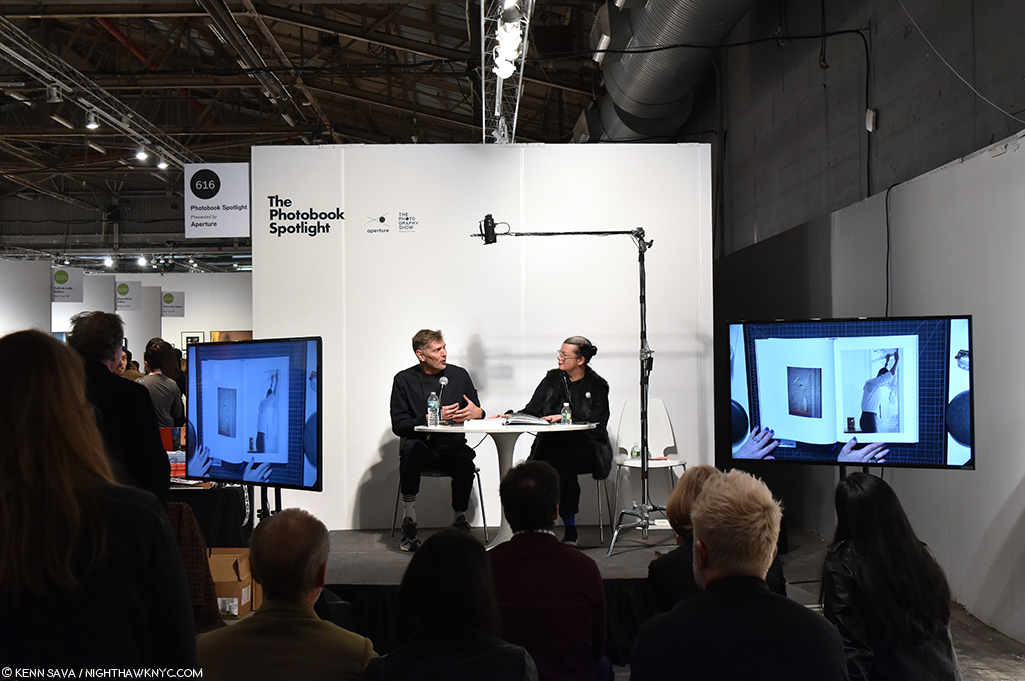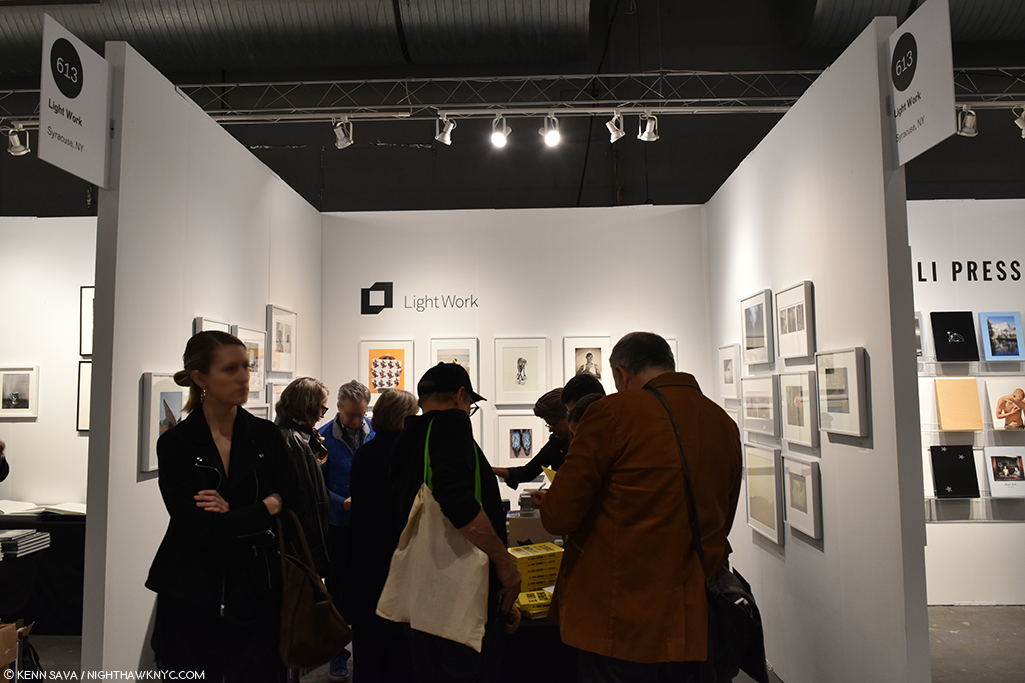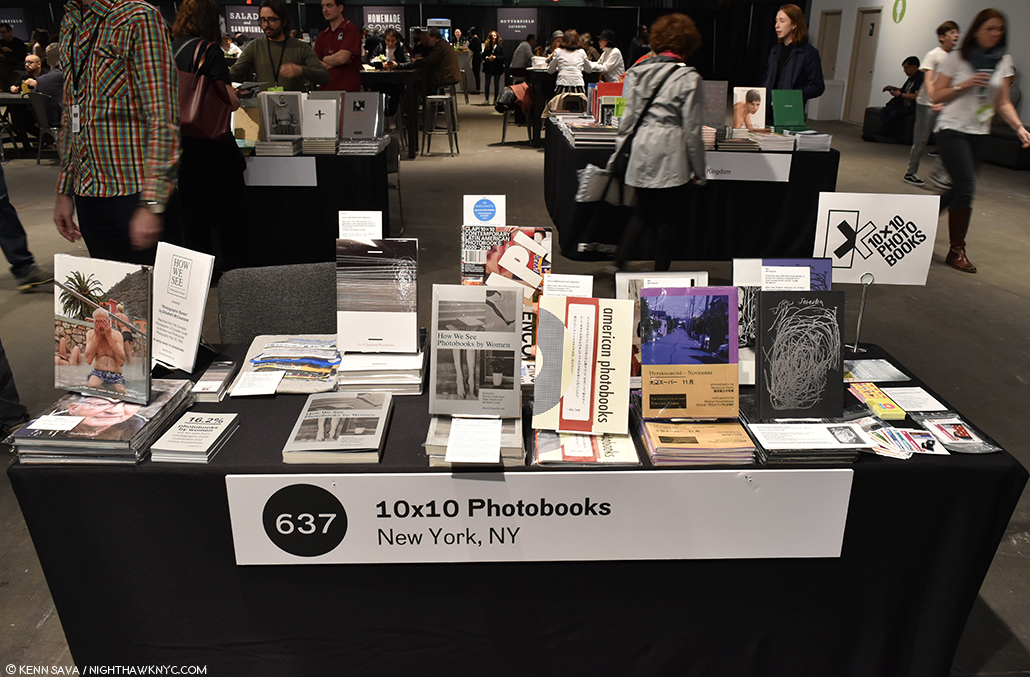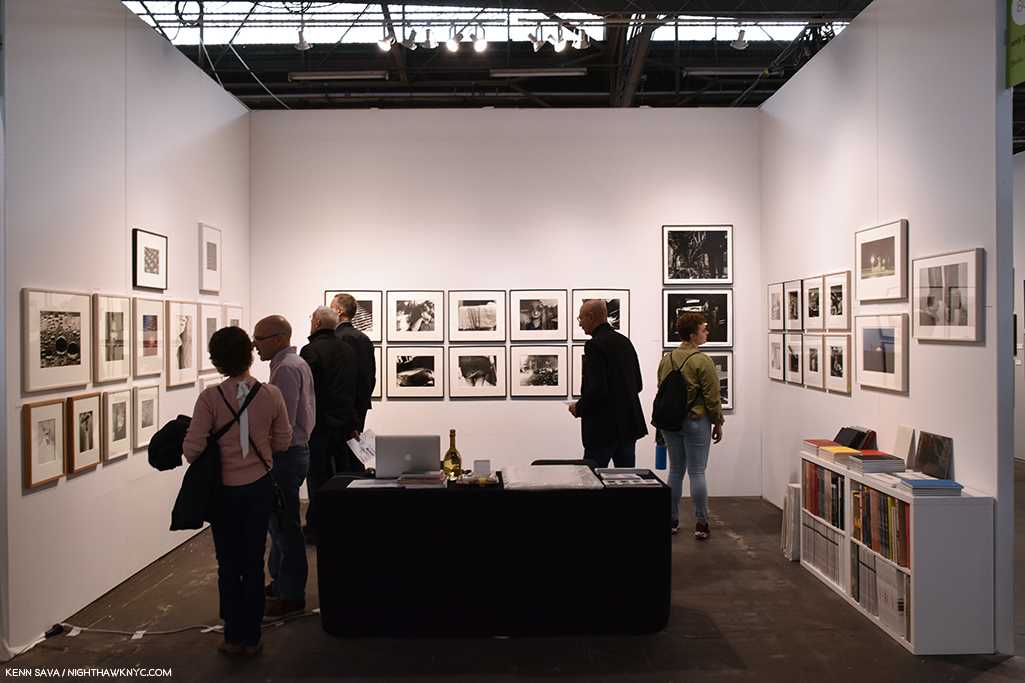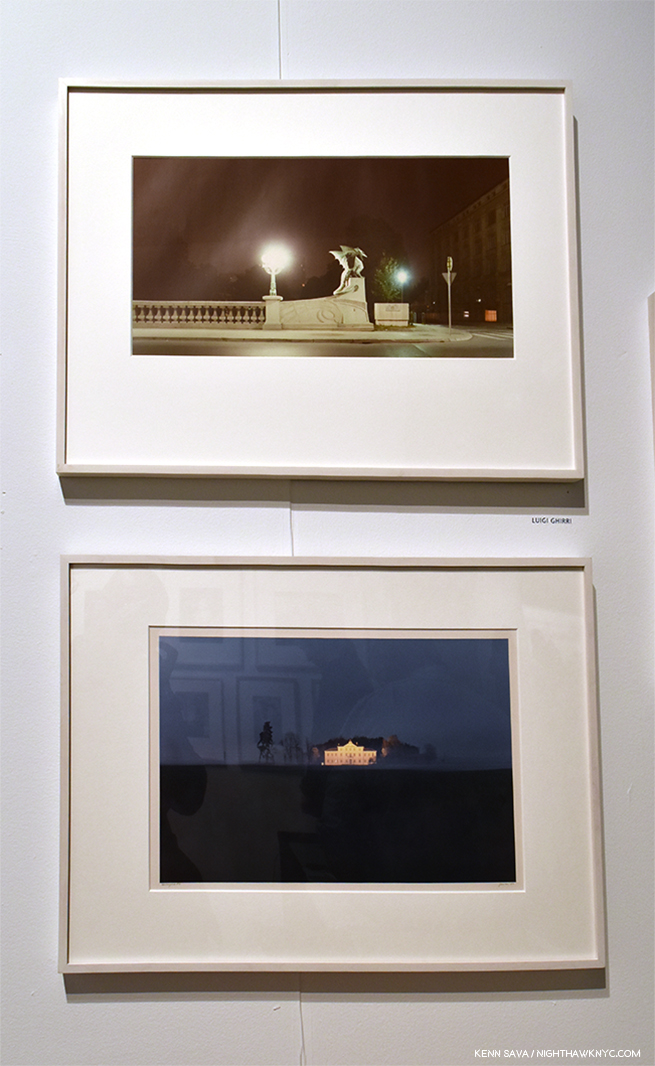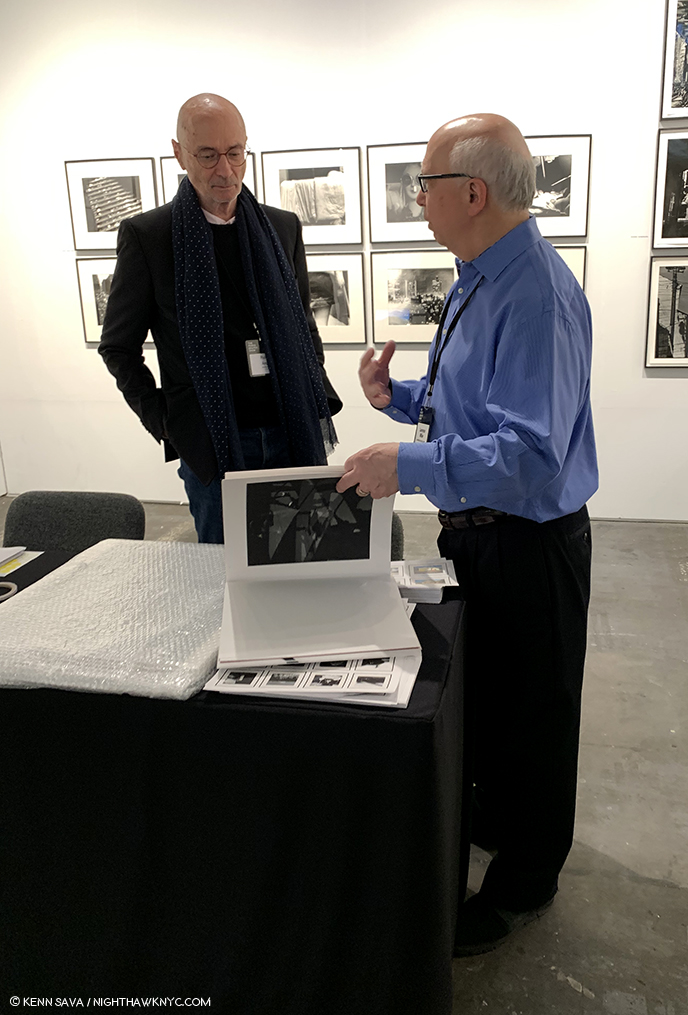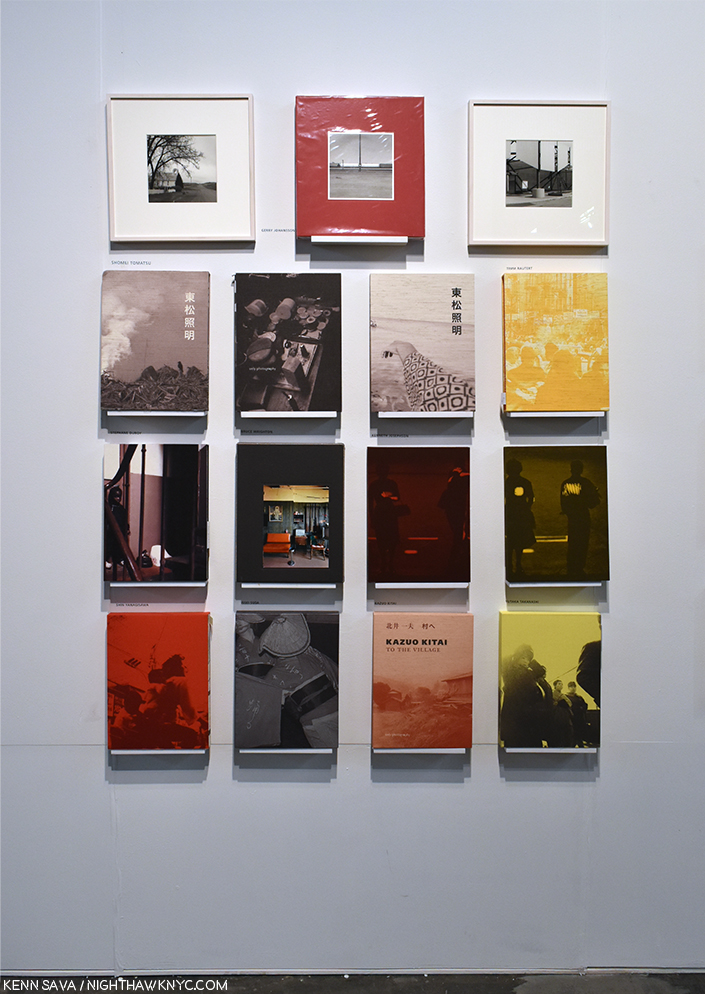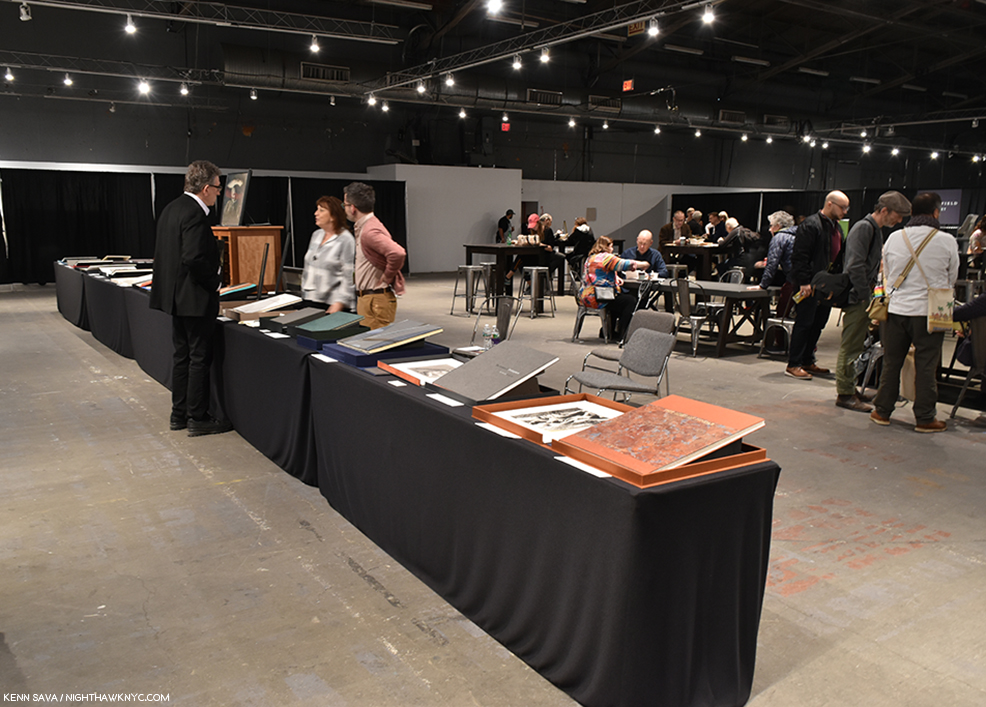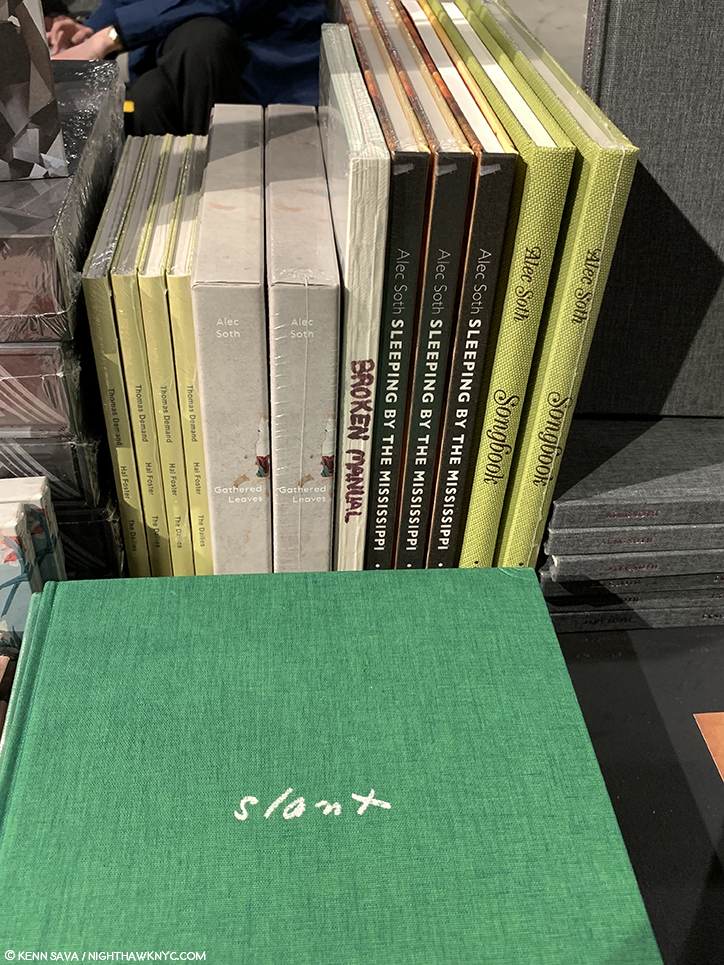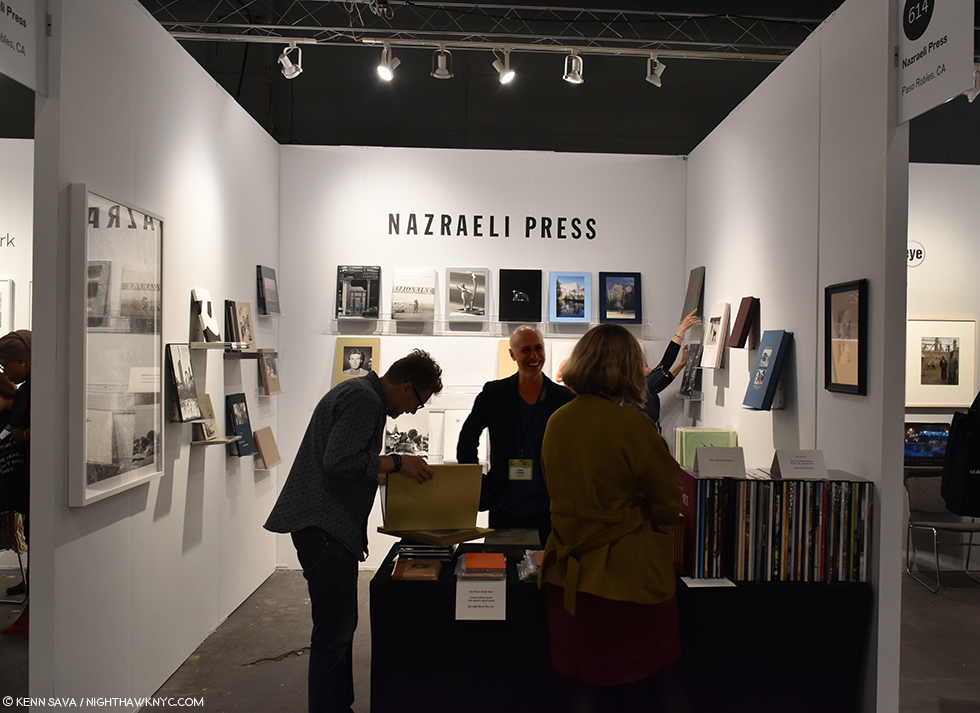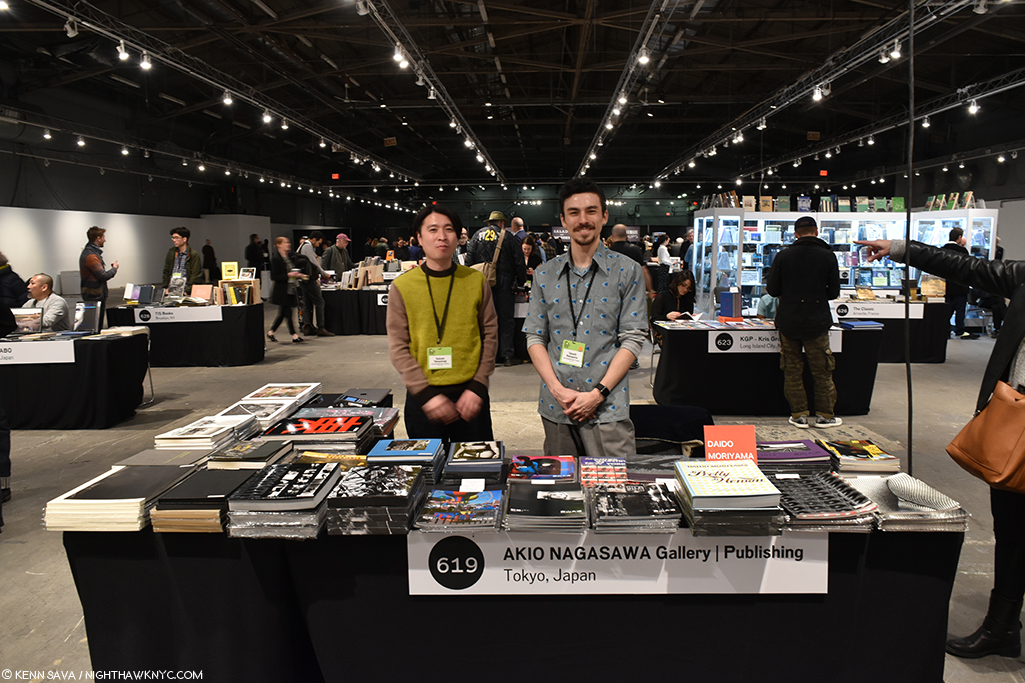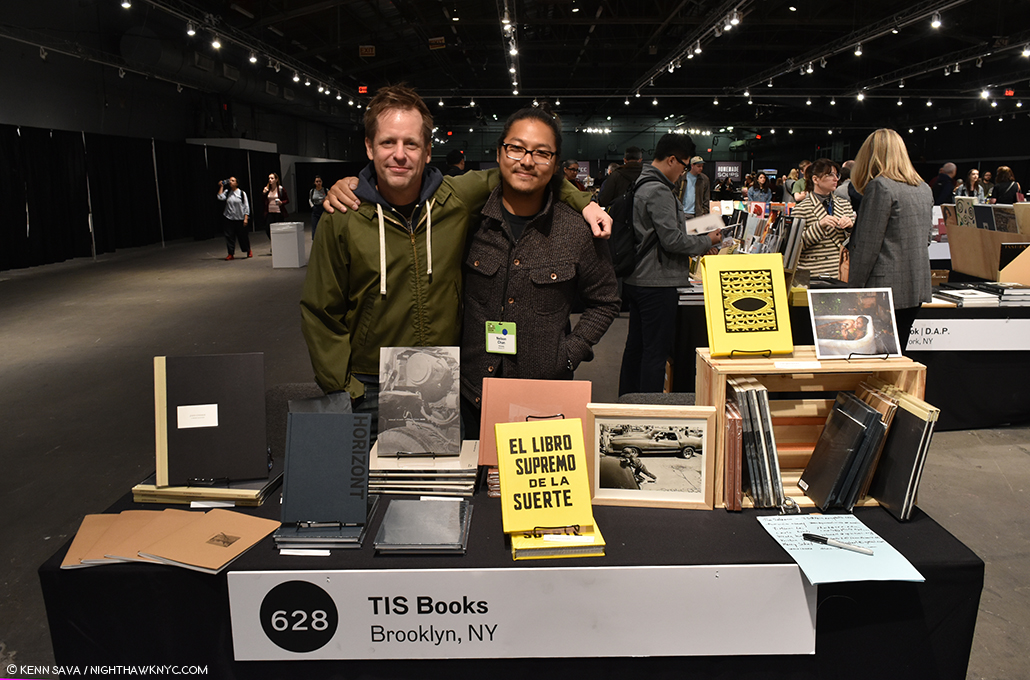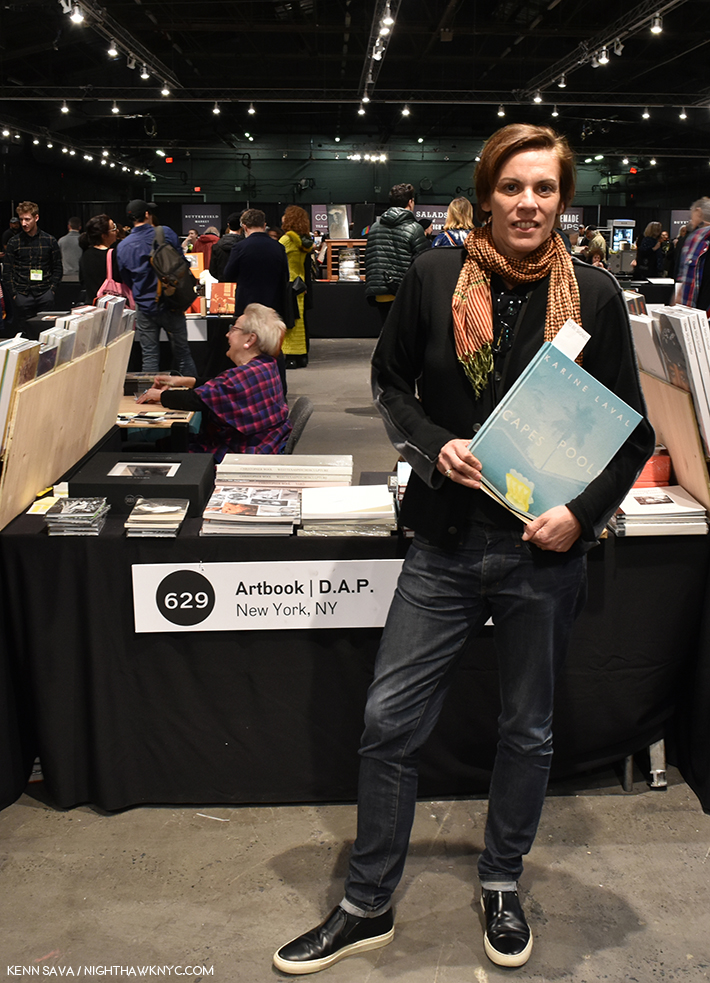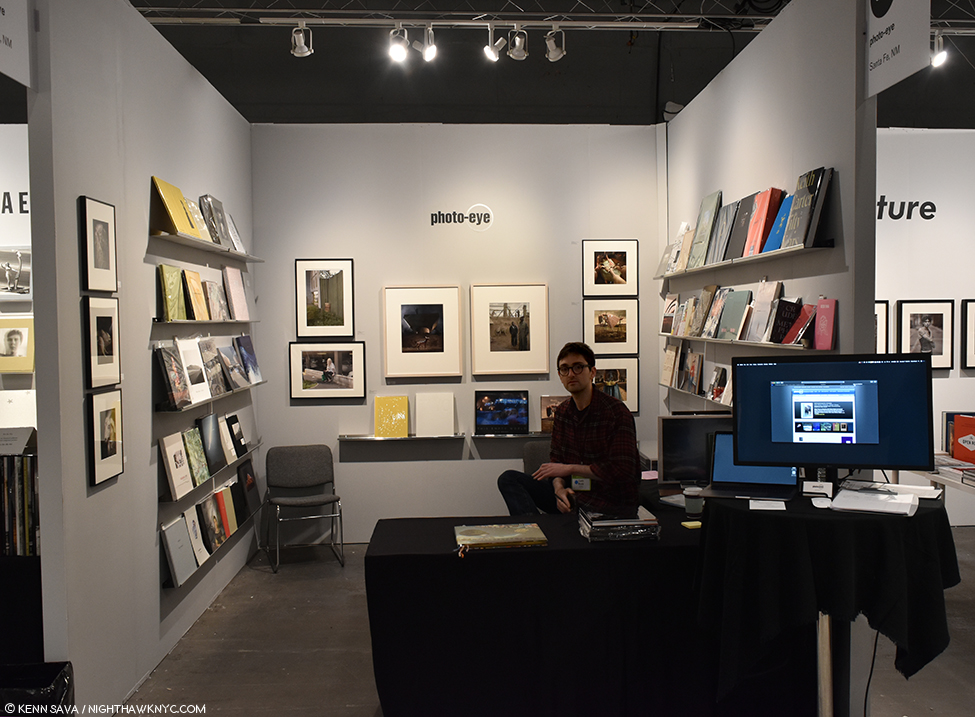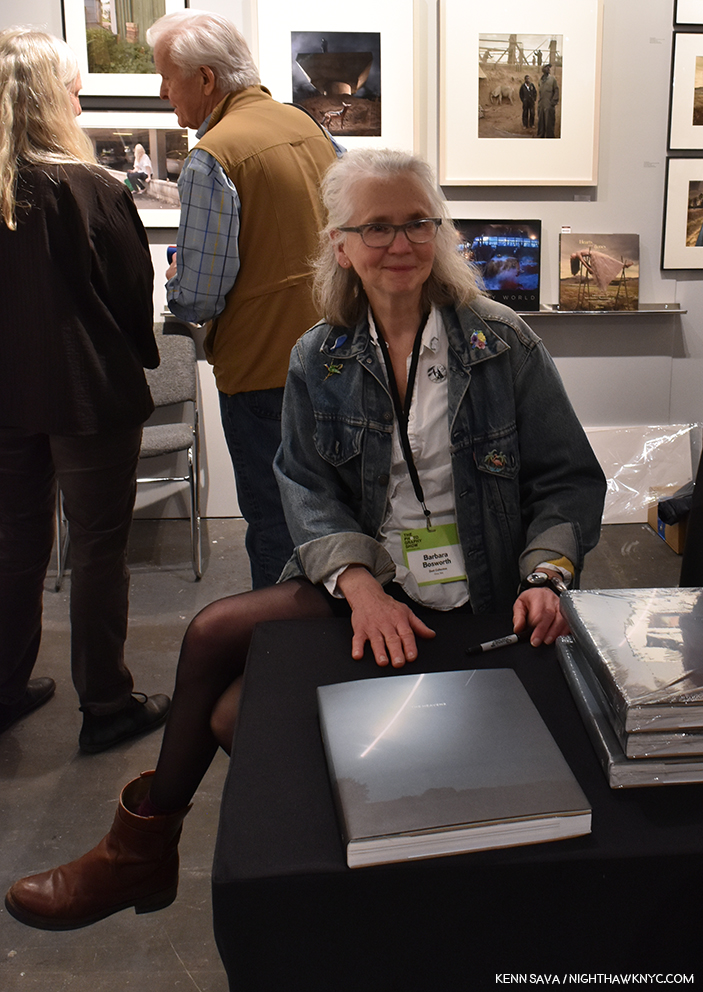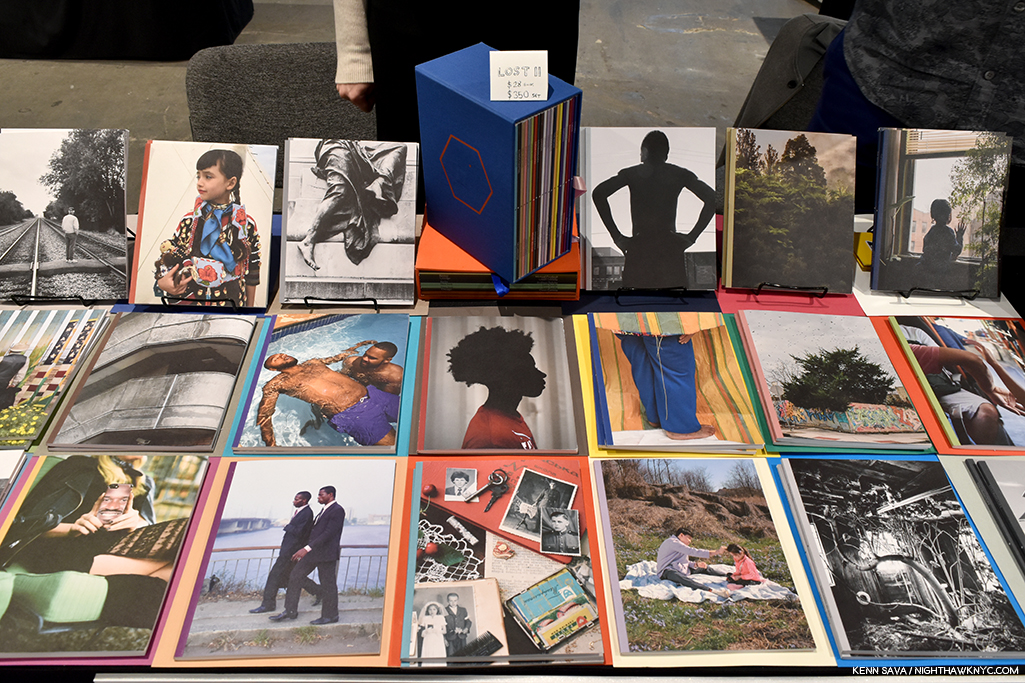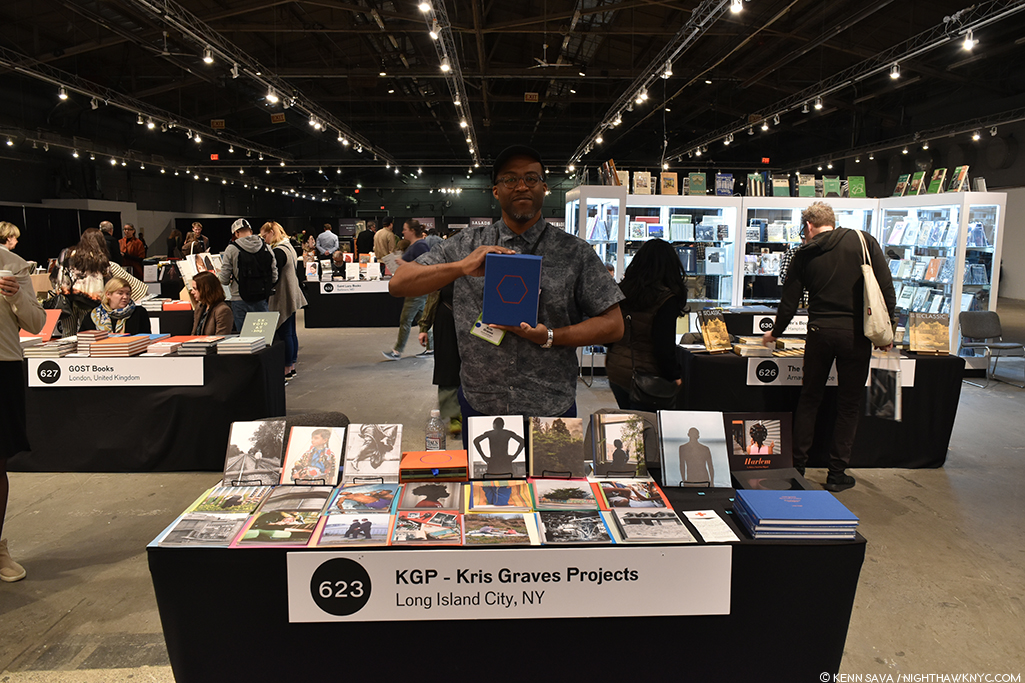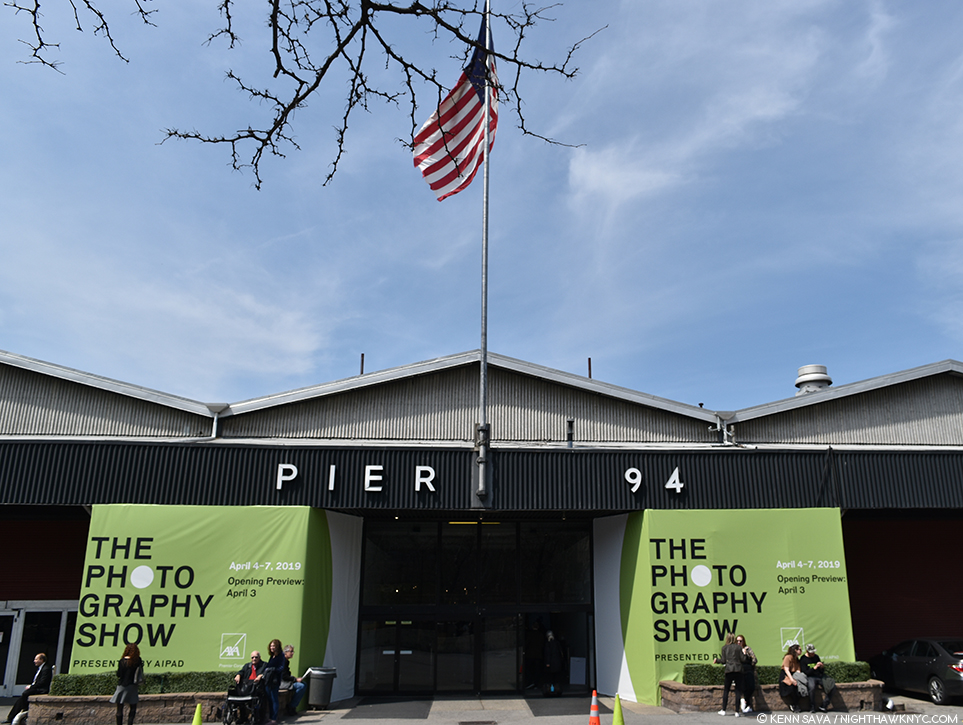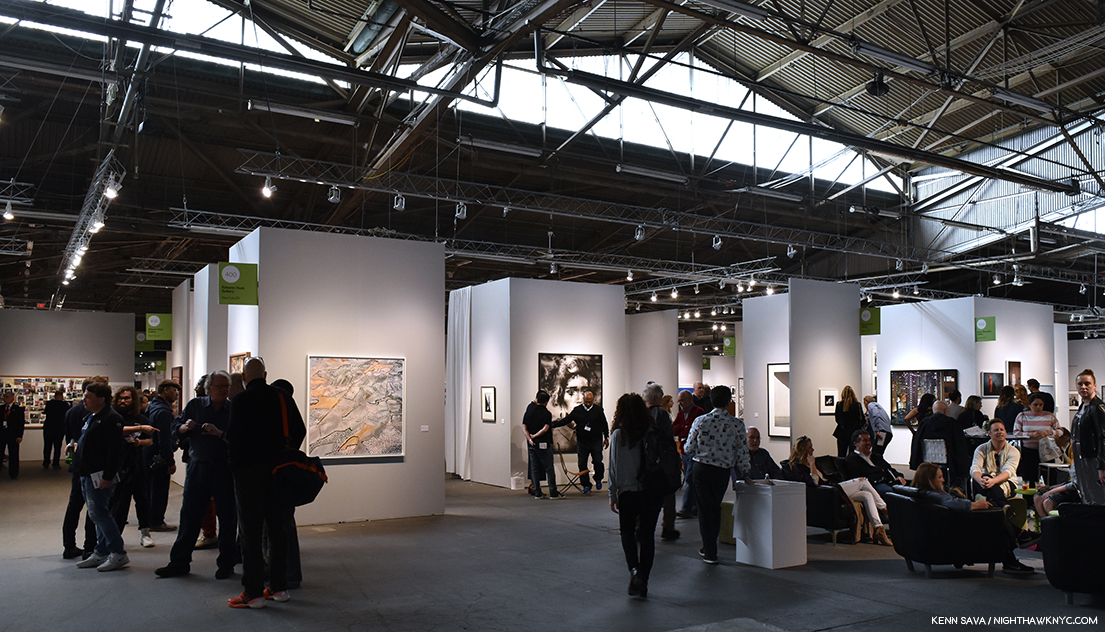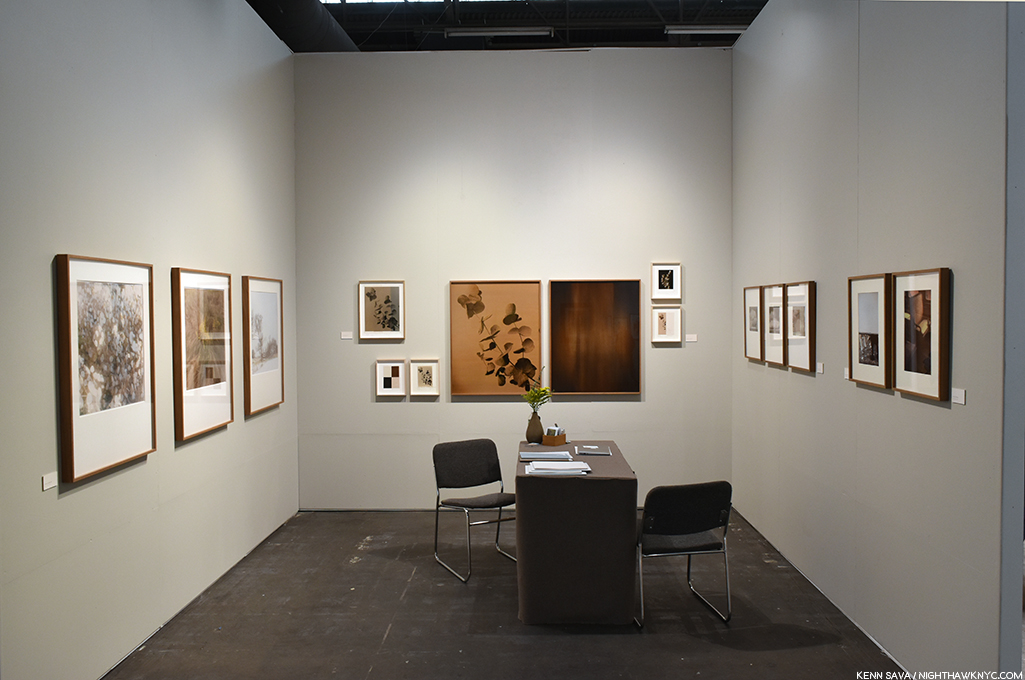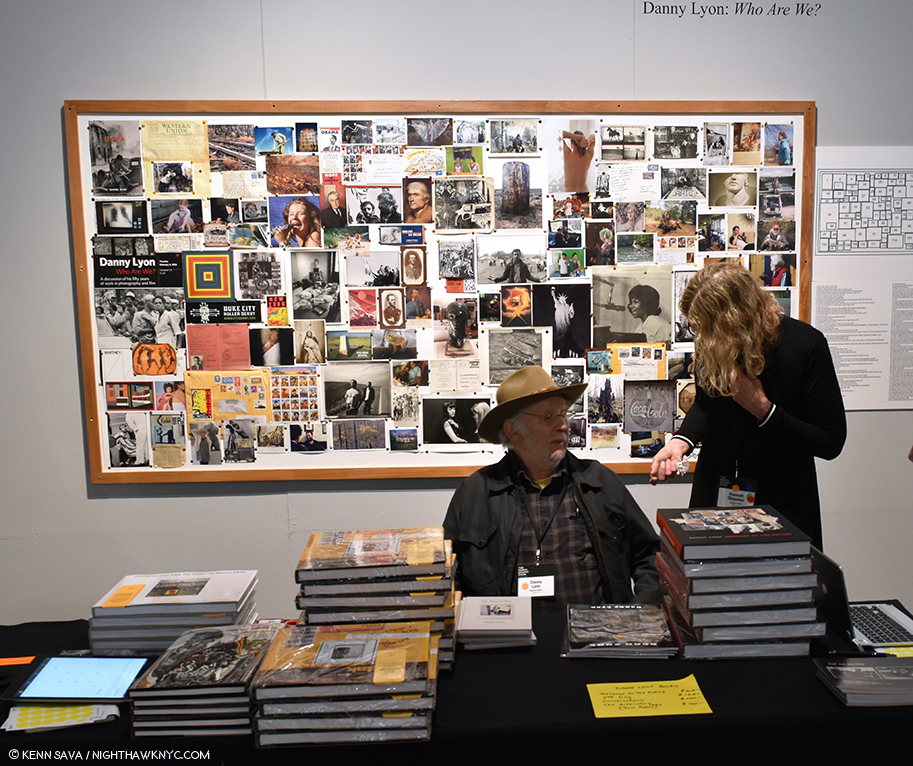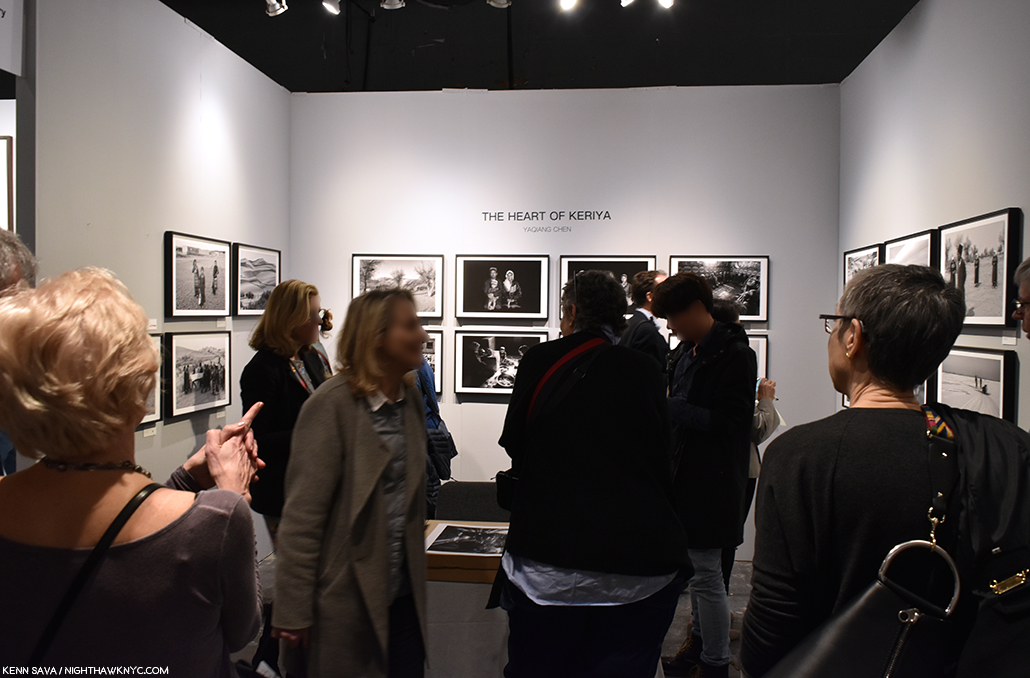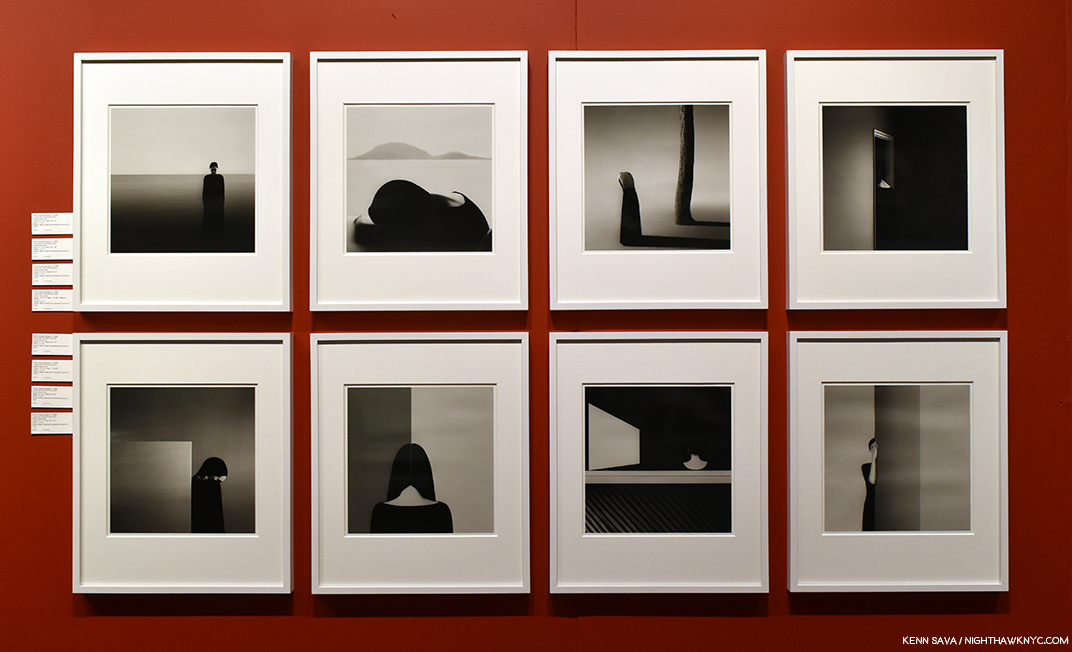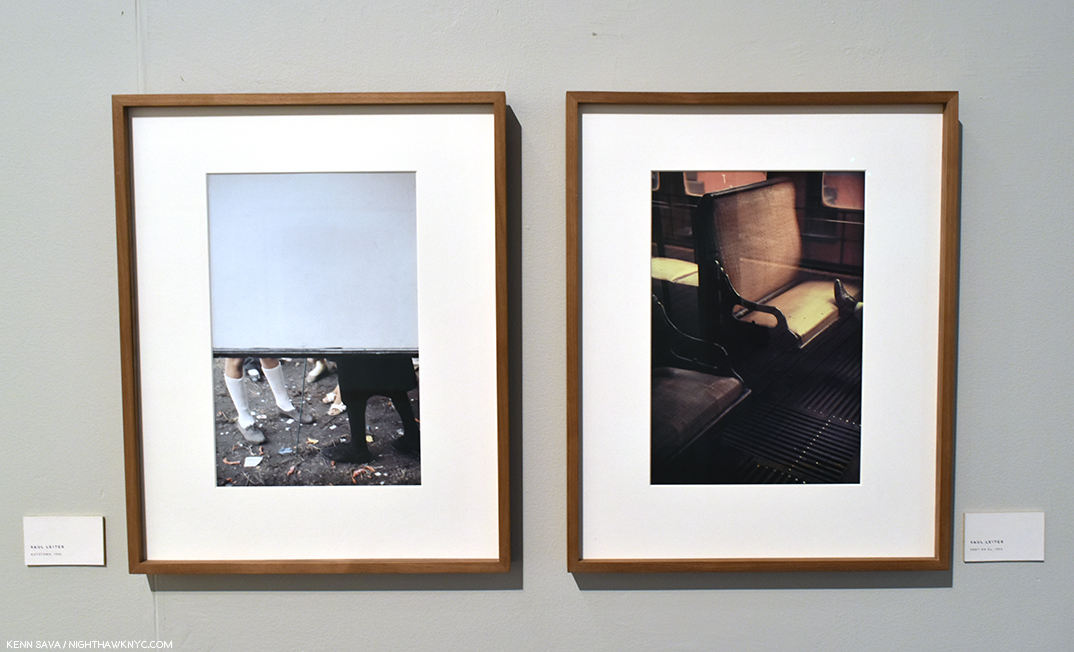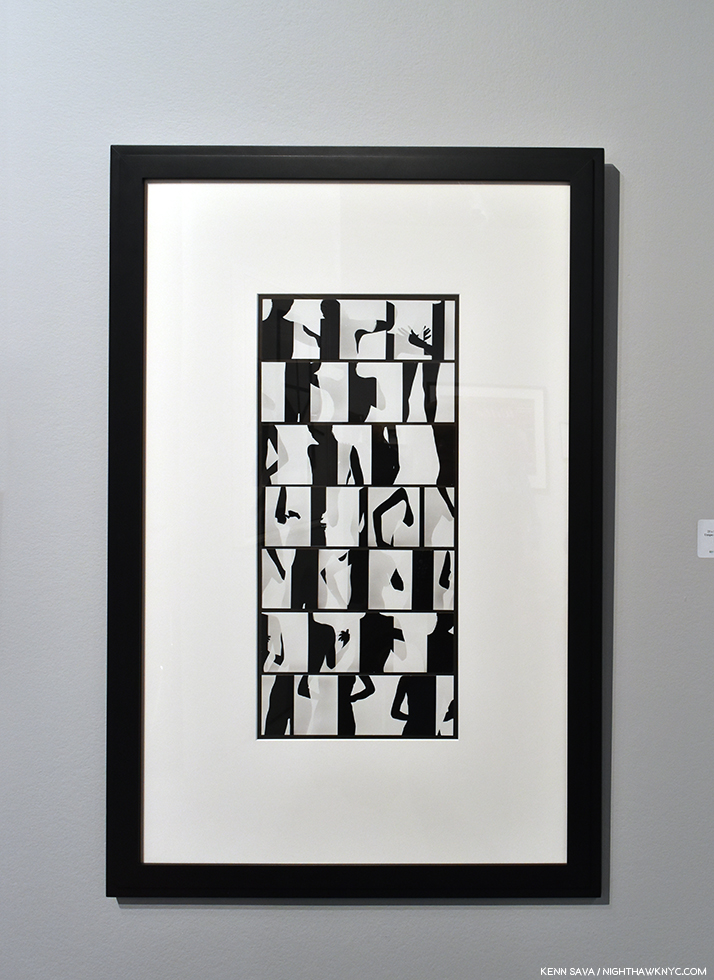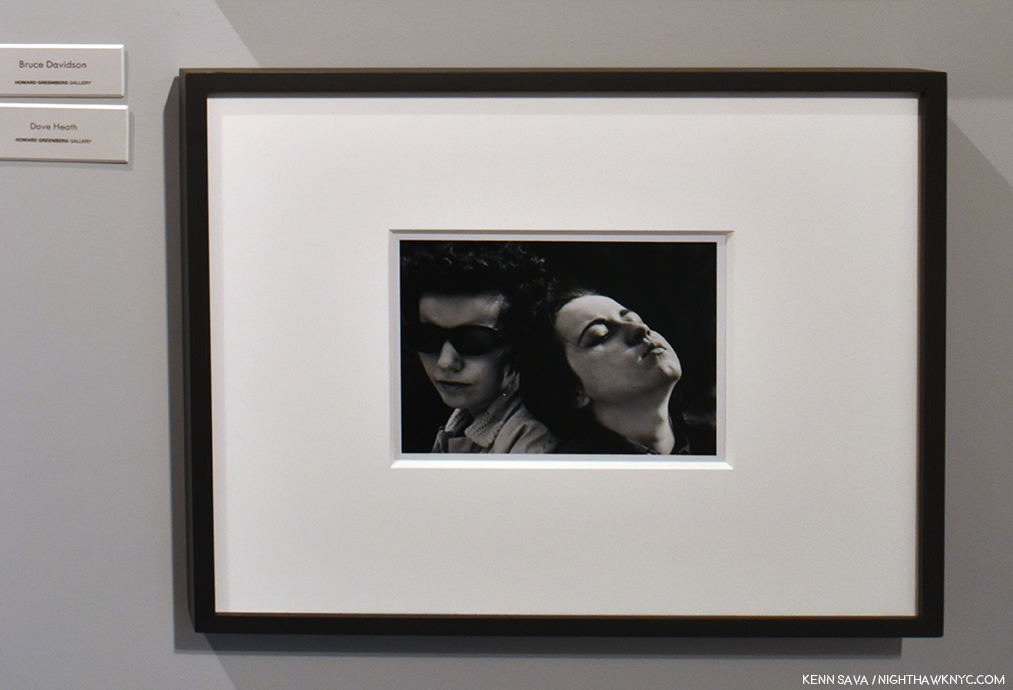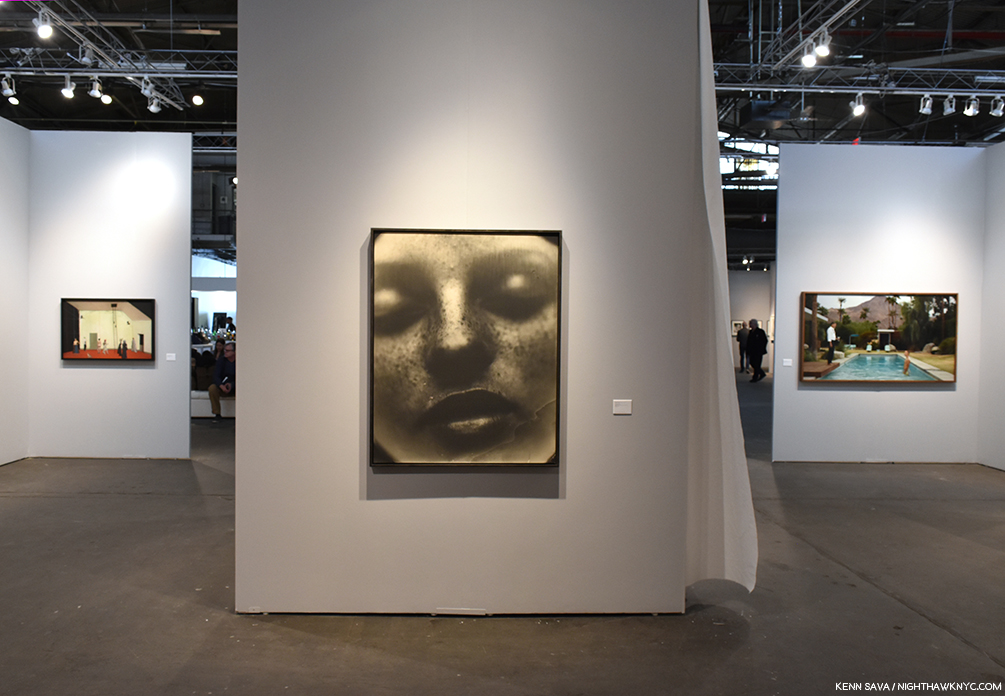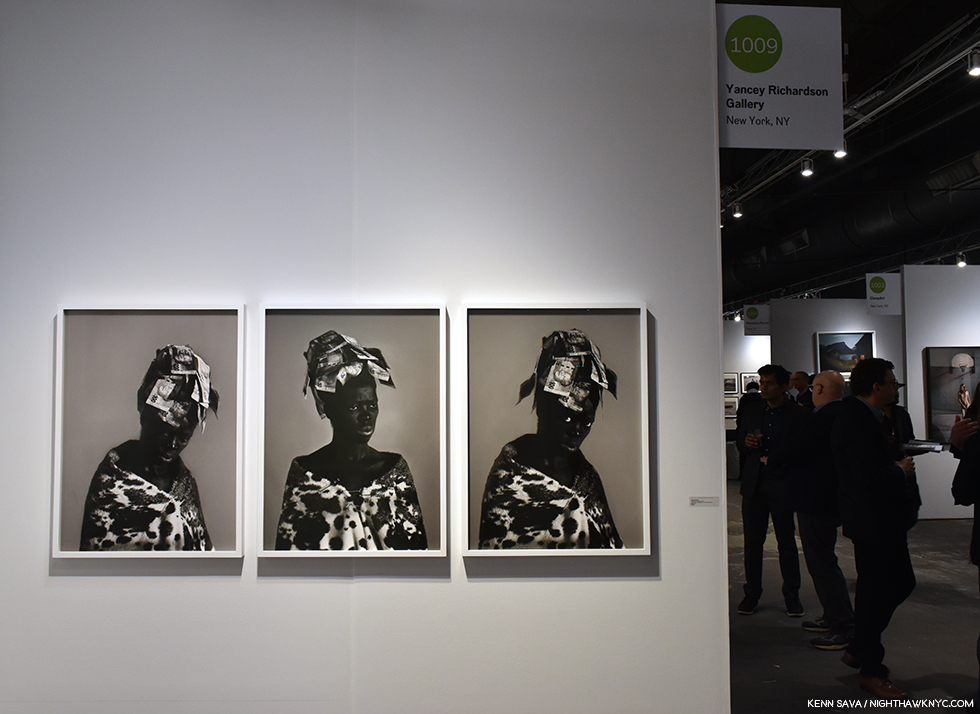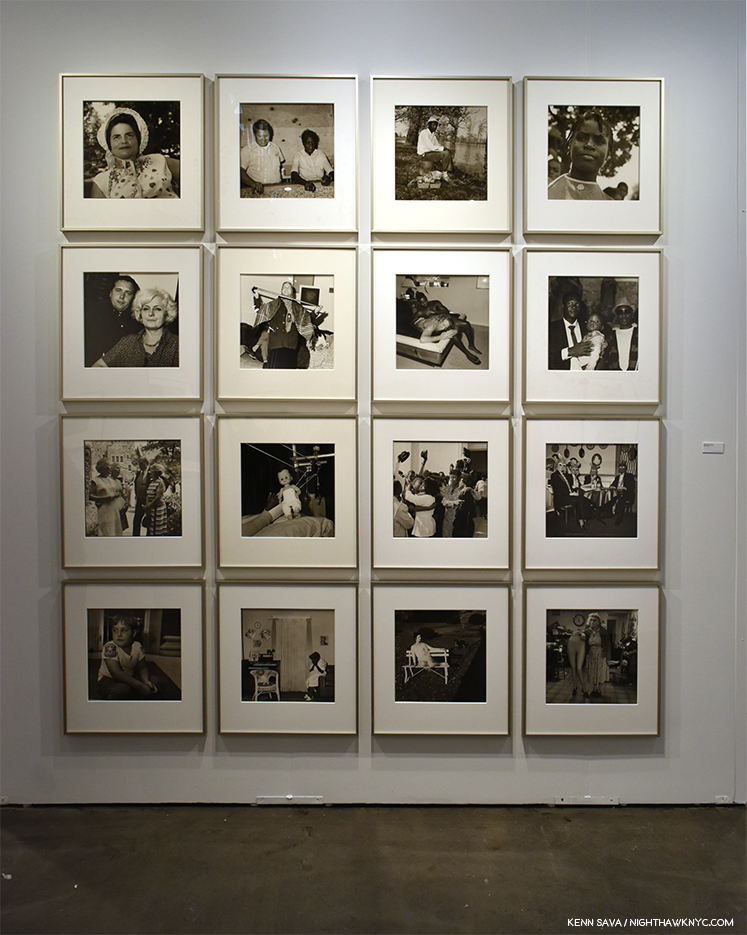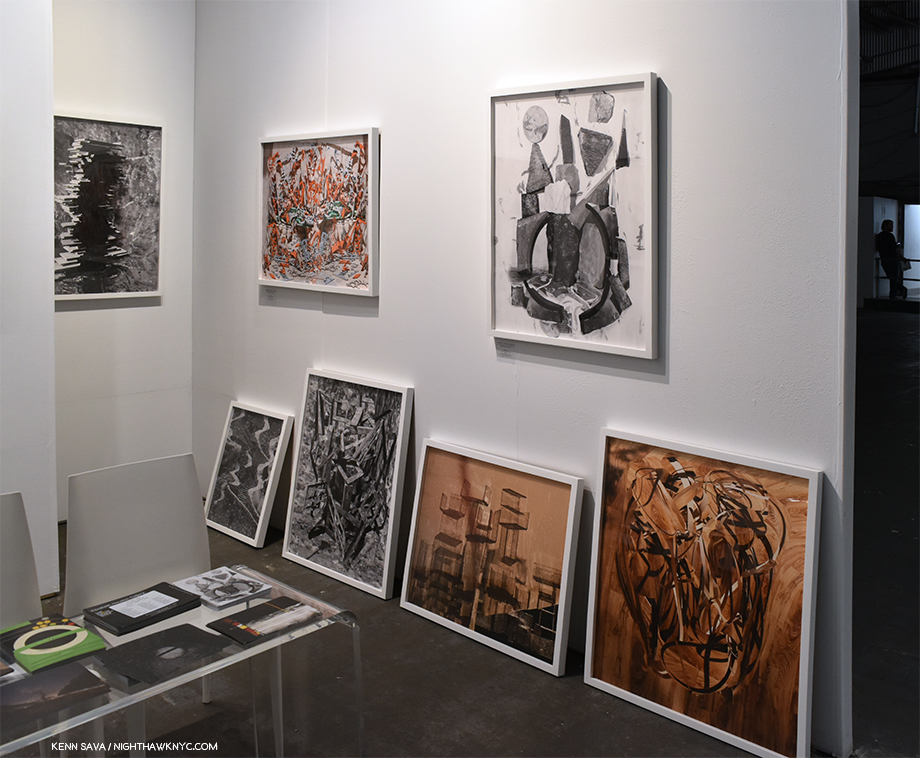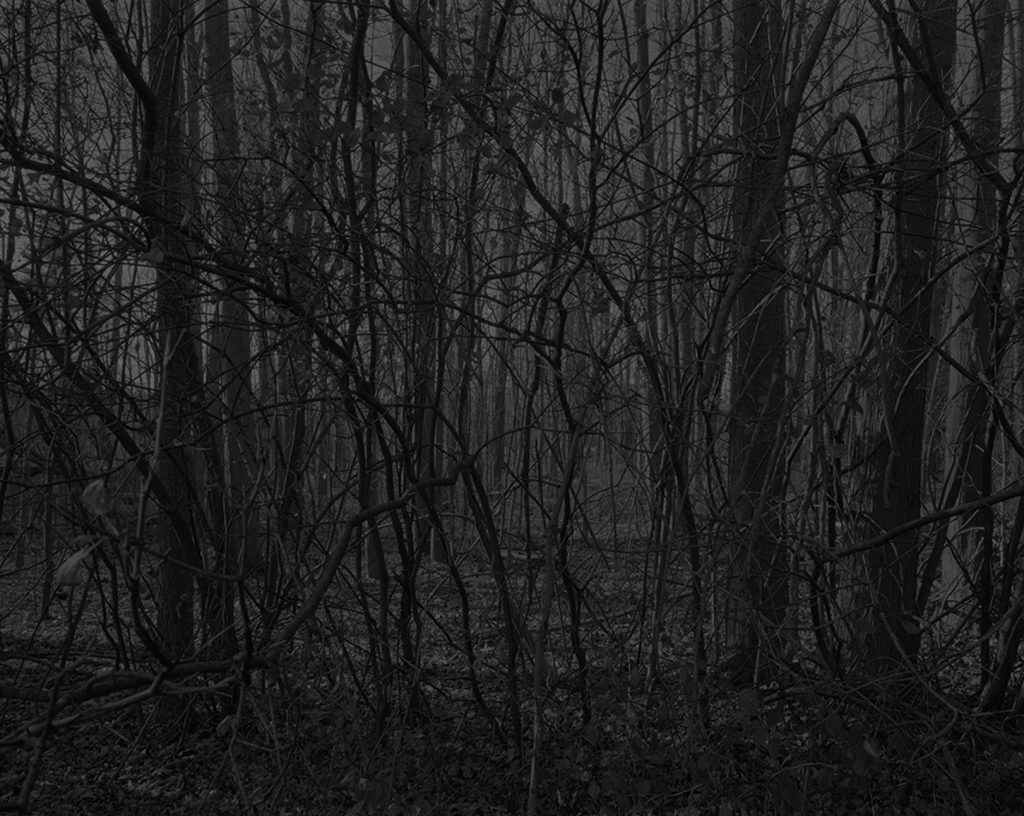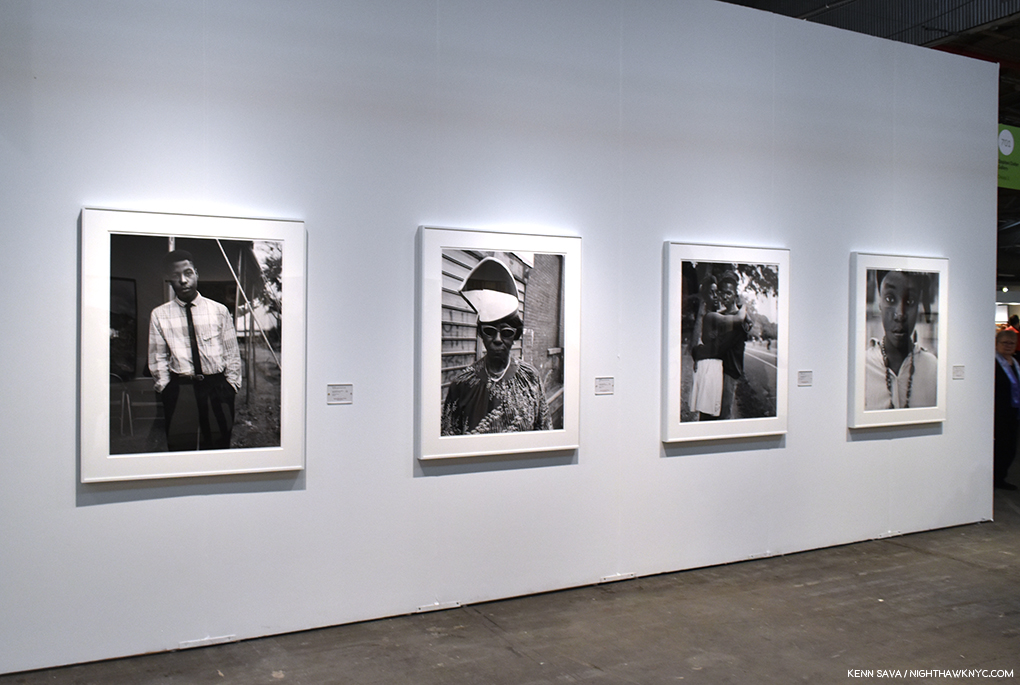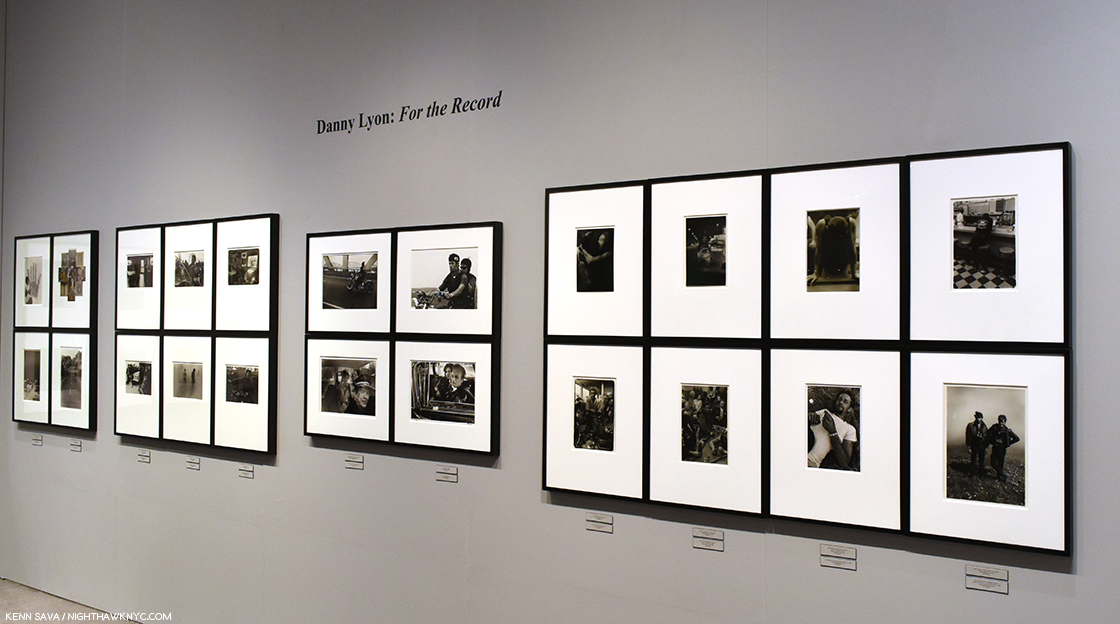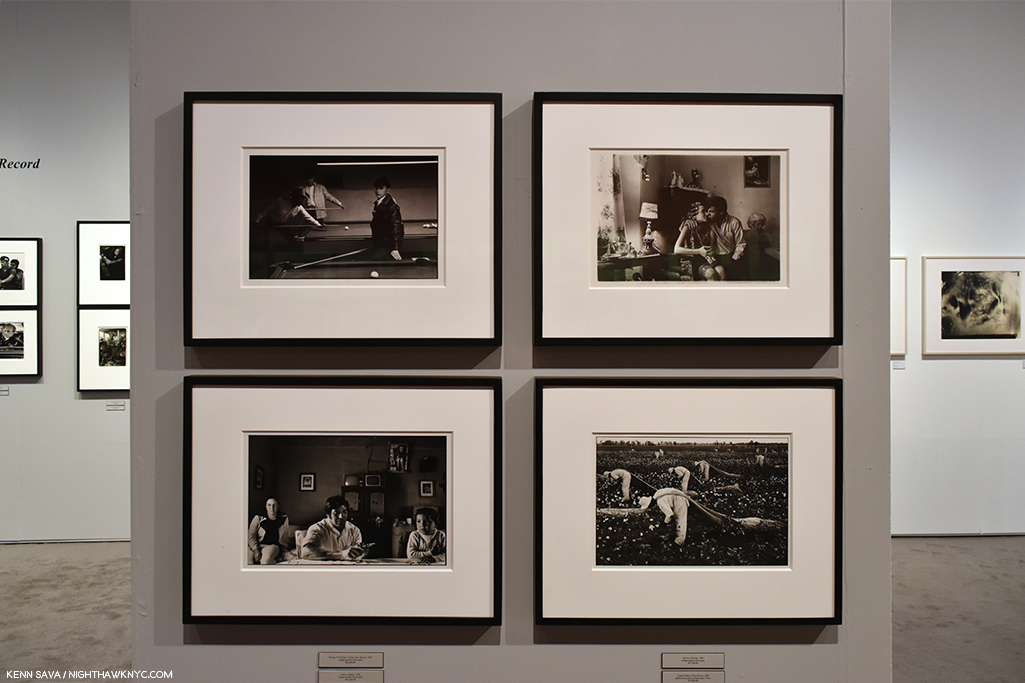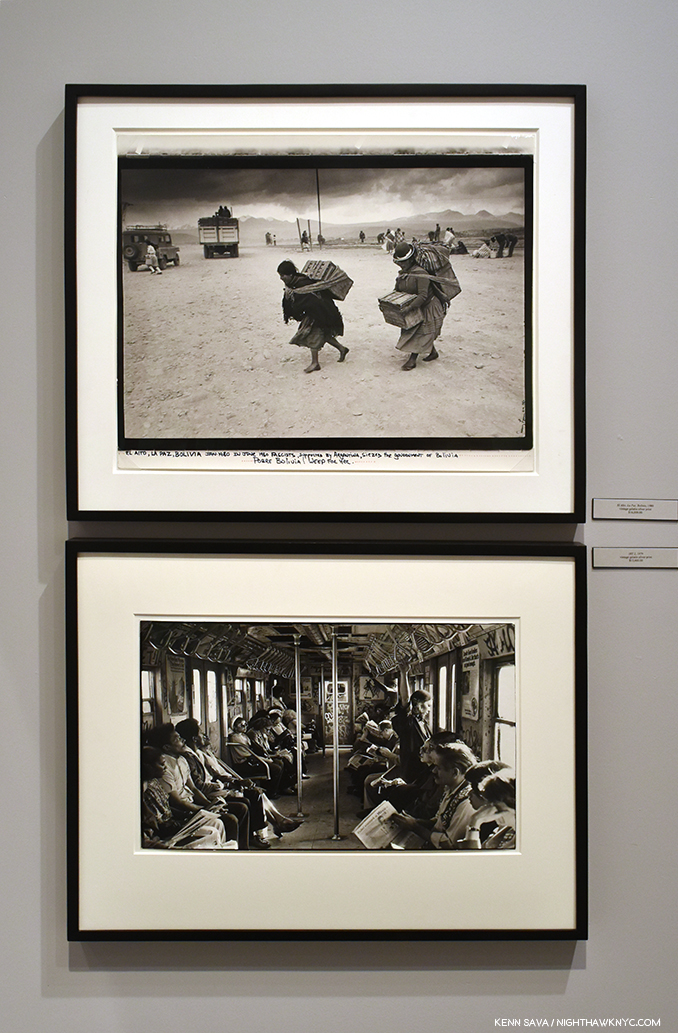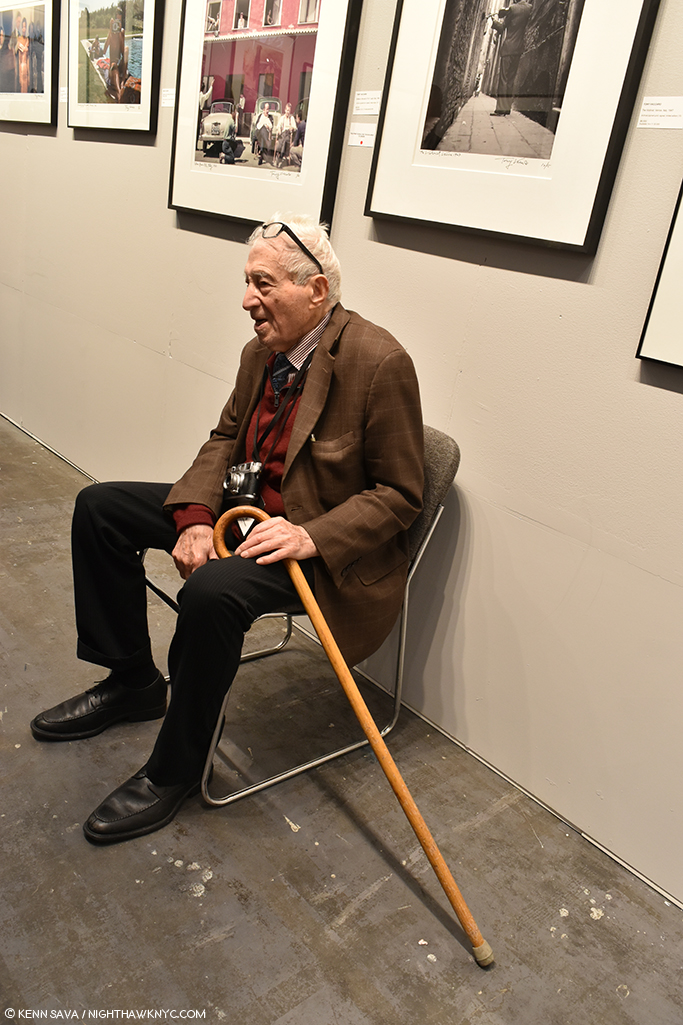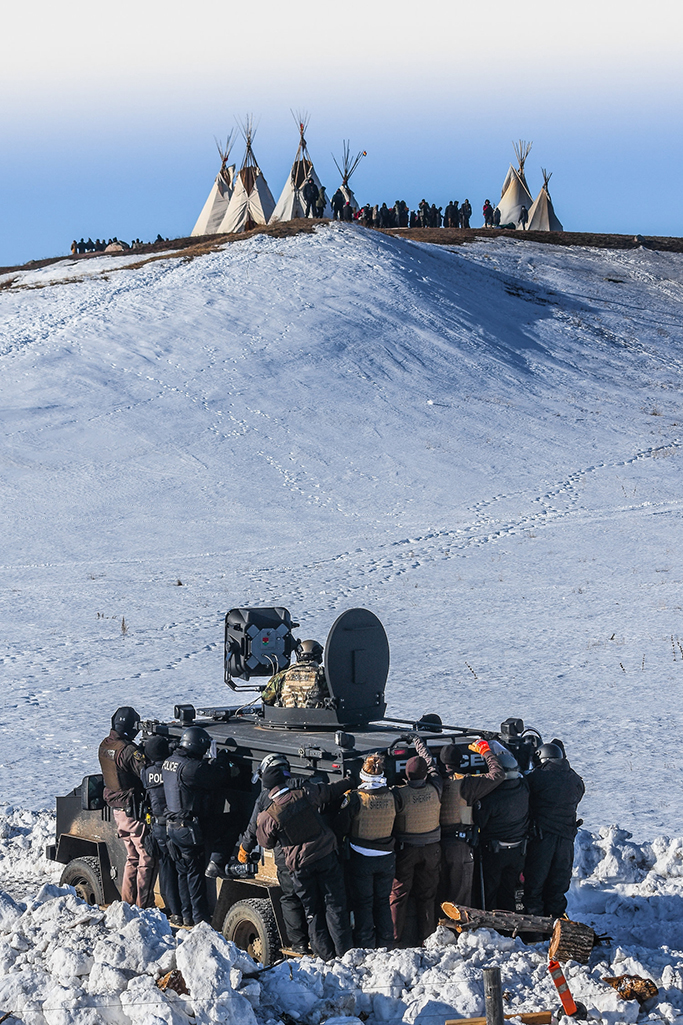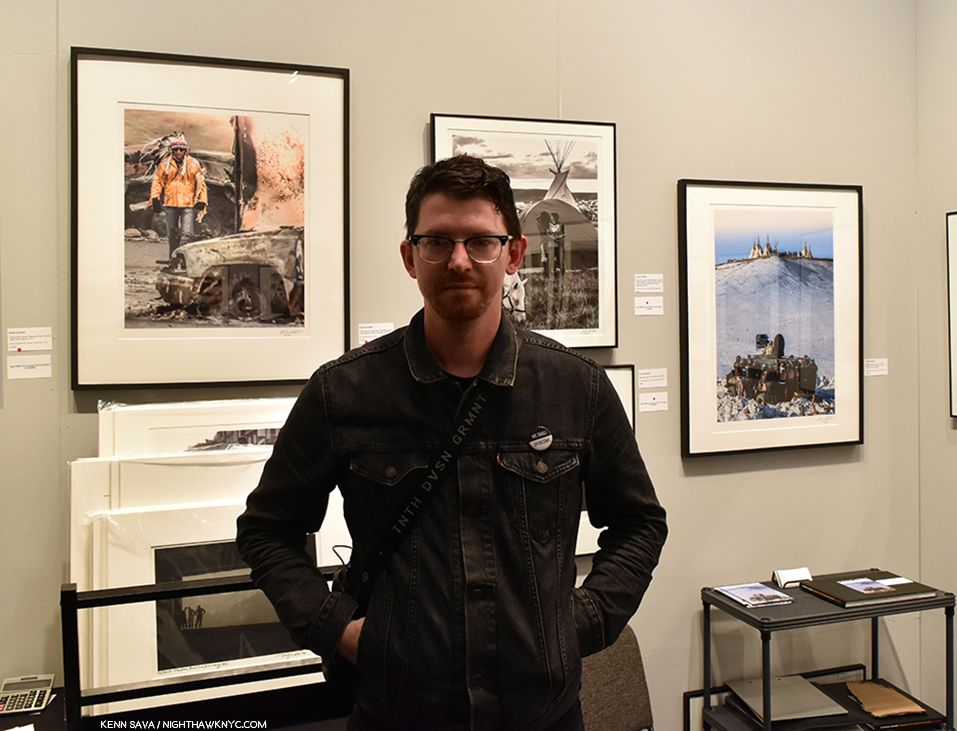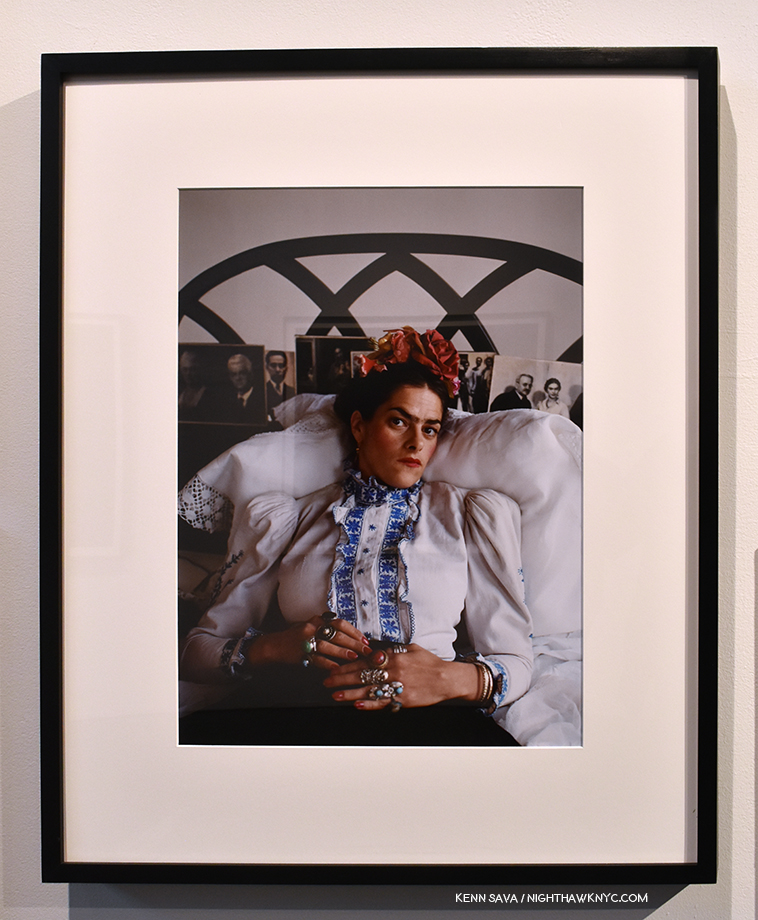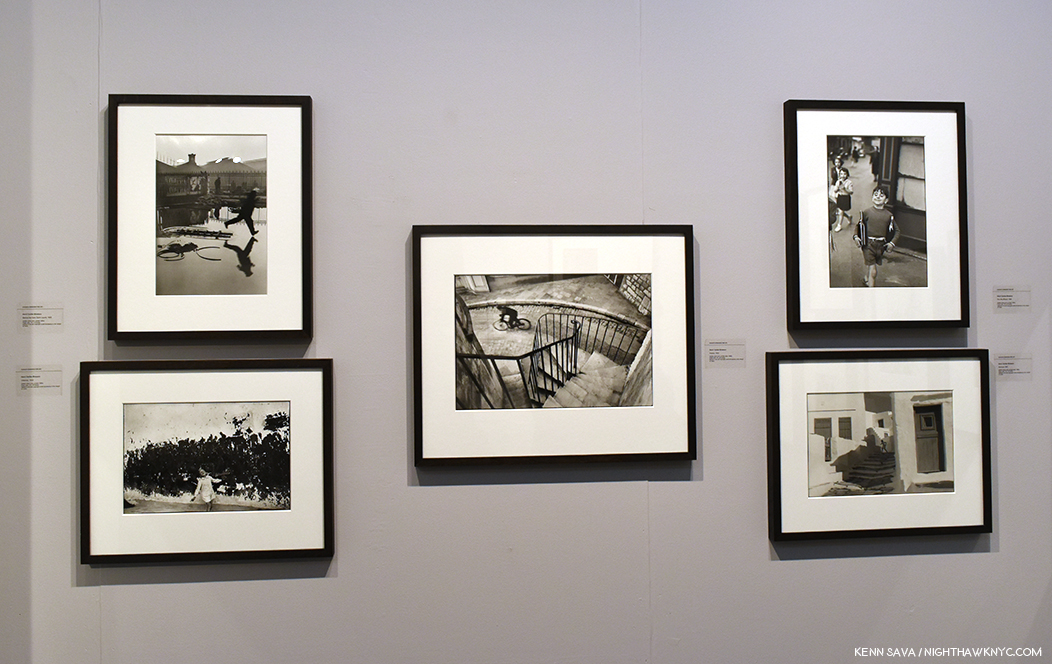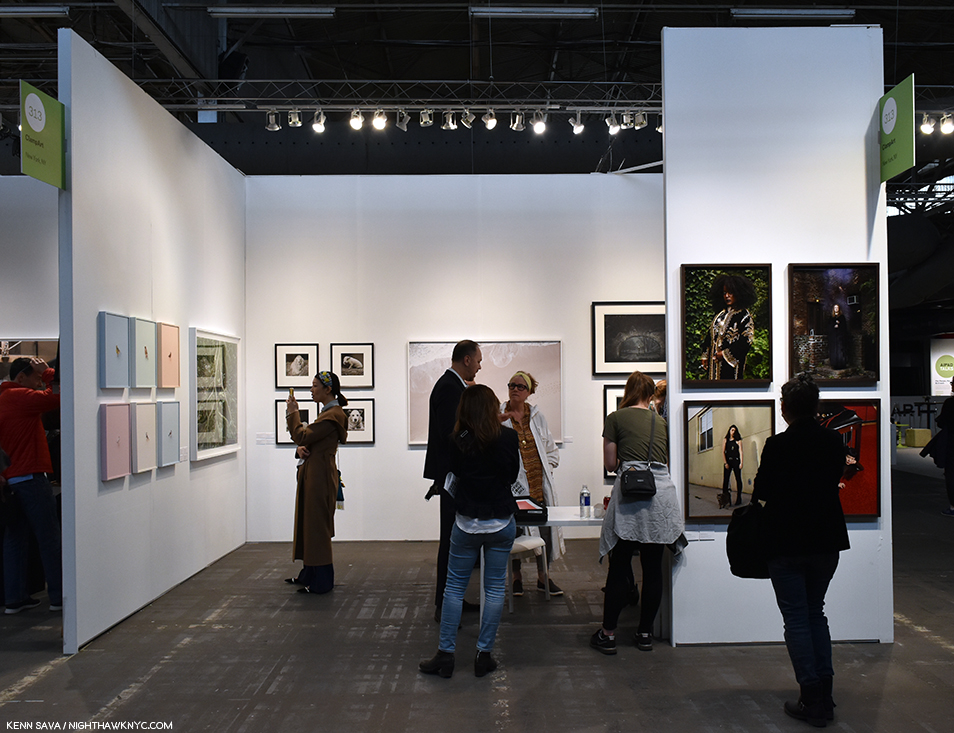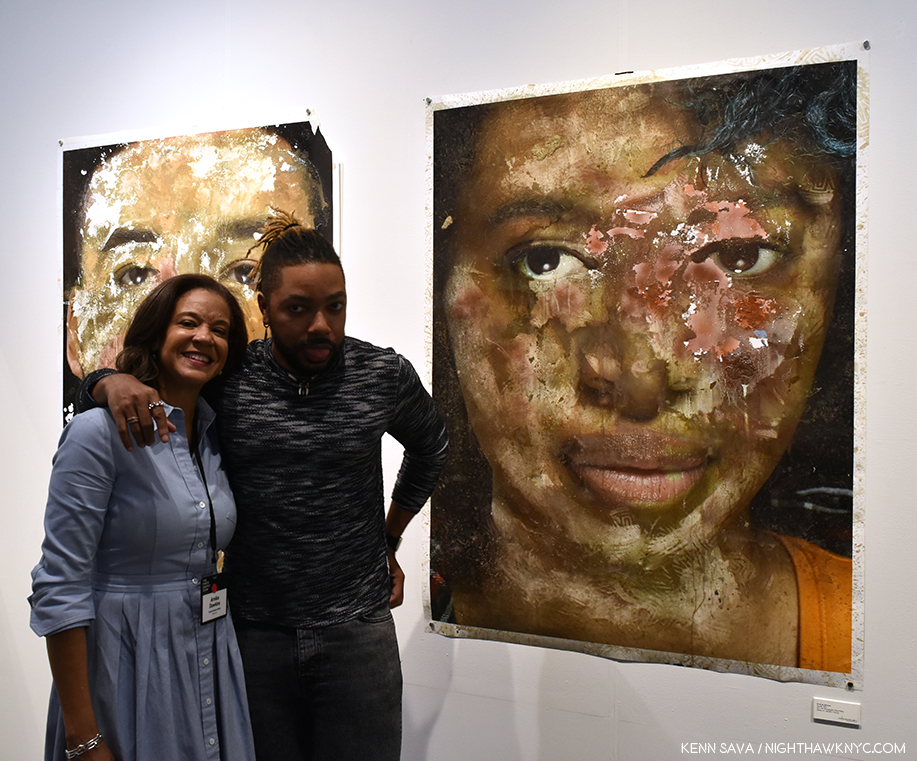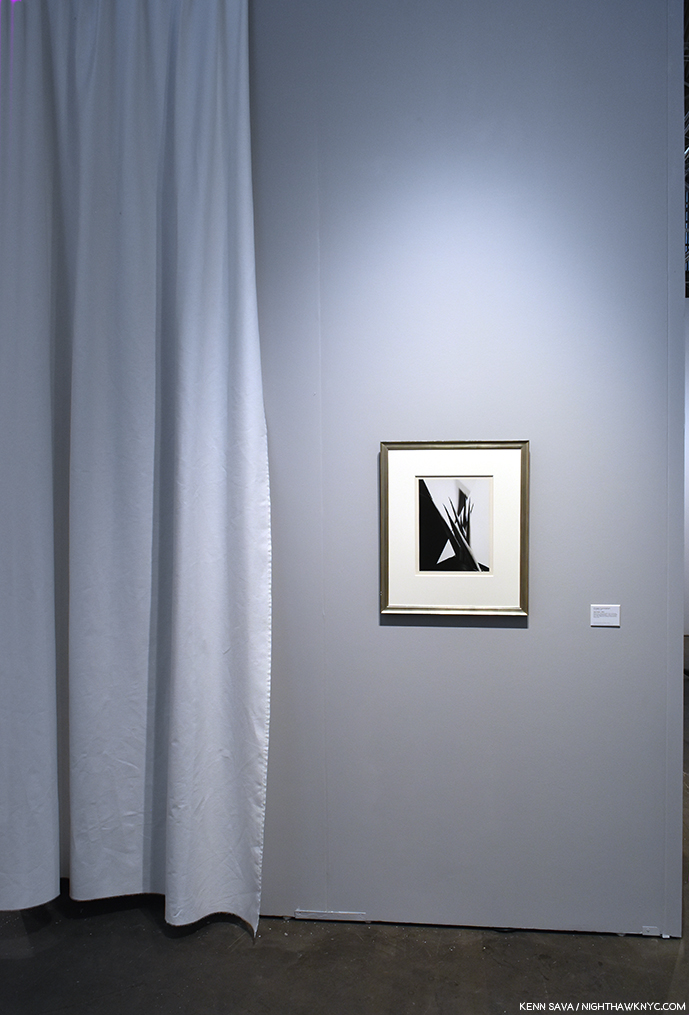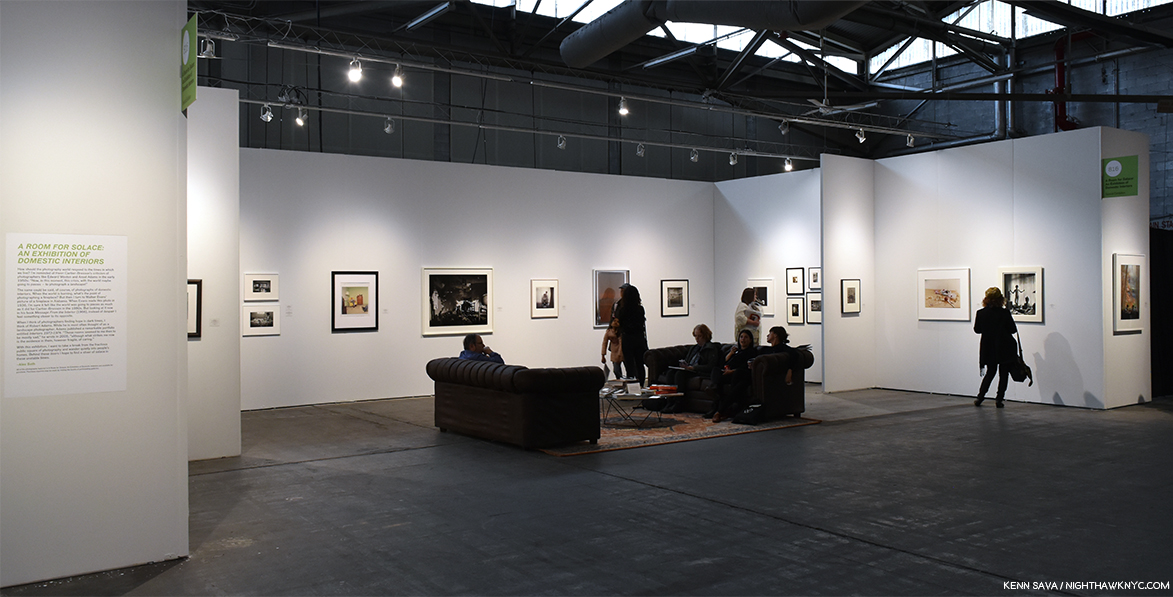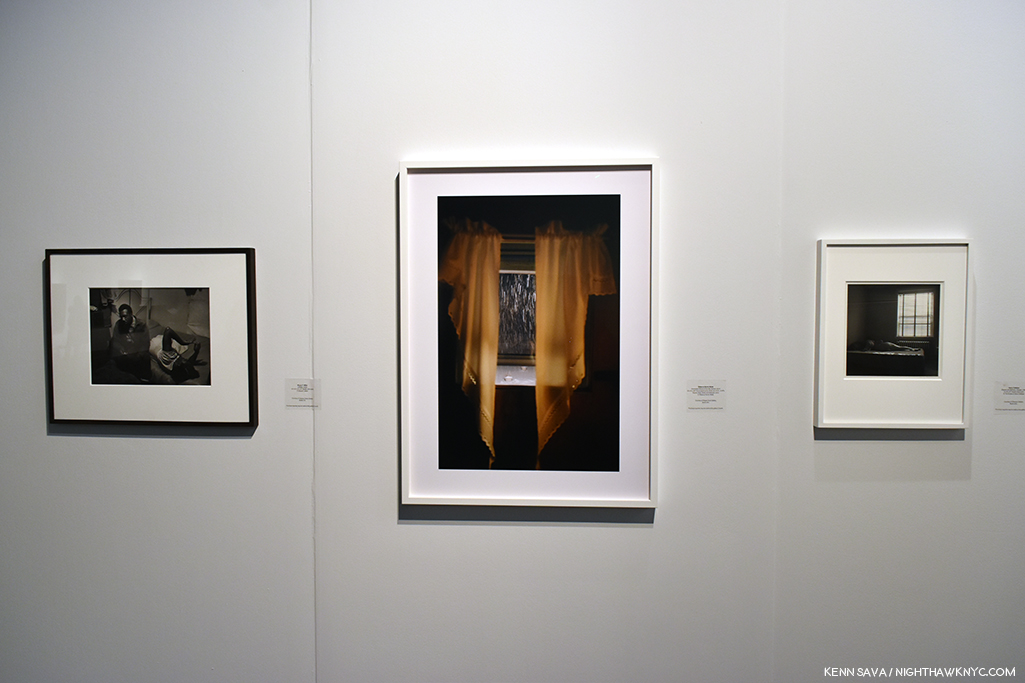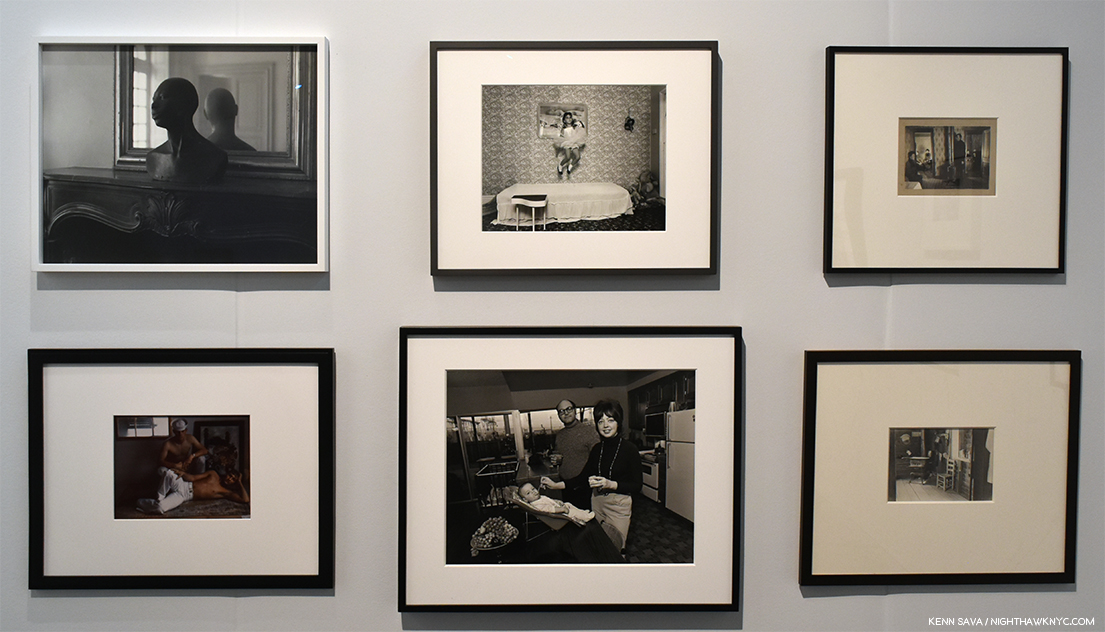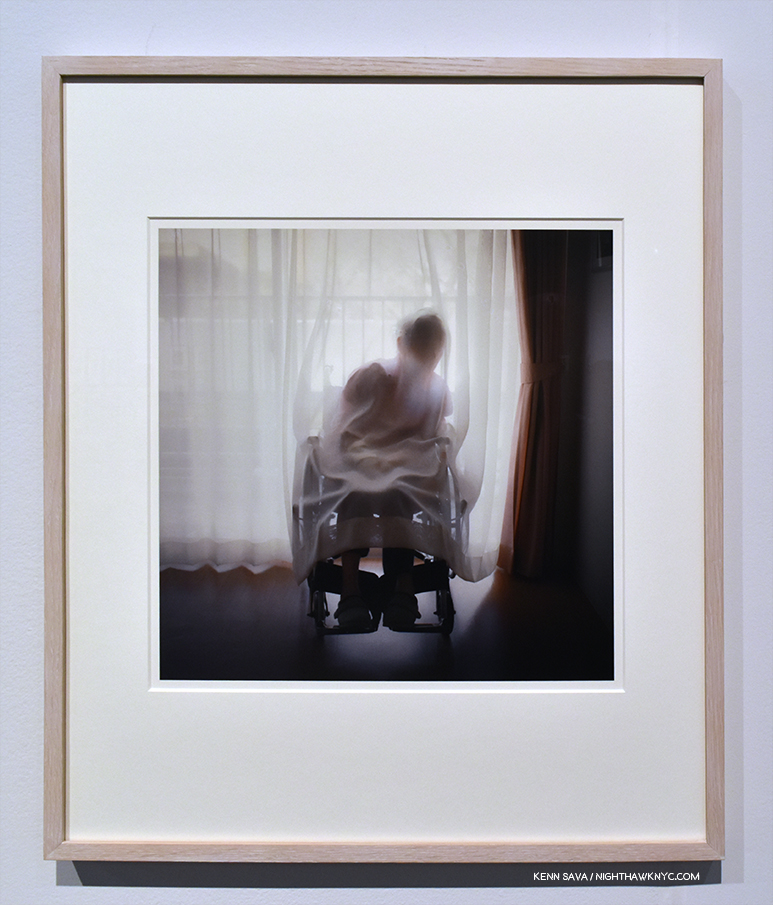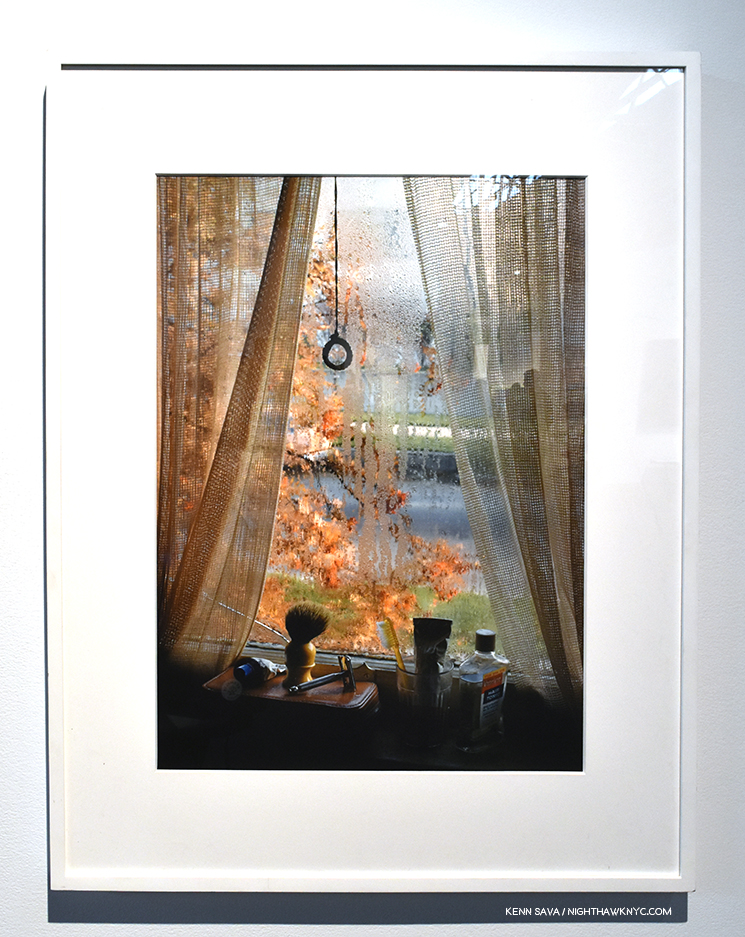Written by Kenn Sava. Photos as credited.
“Another day in Kandahar
I must focus now
Think of the frame
Think of each side of the rectangle

Focus on the frame
Stay calm under fire
Focus your mind
Acknowledge the danger
And work
Everything happens so fast
I must control my mind
Relax
and get the shot”
Louie Palu in the opening voiceover in his documentary film, with a screenshot from, Kandahar Journals, 2015
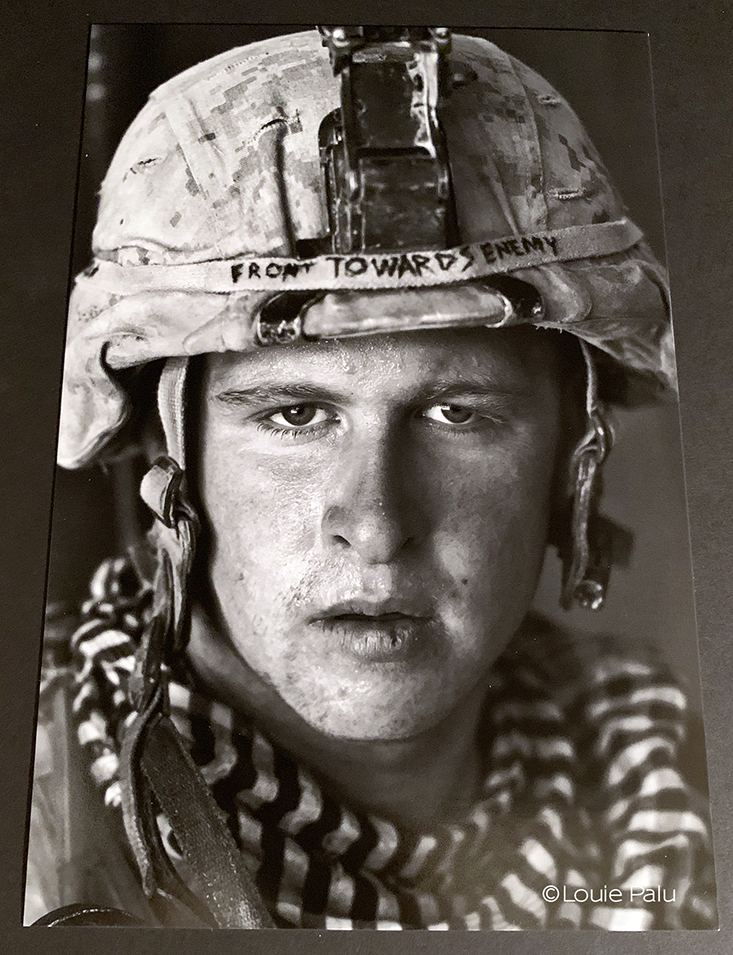
US Marine Lance Corporal Damon Connell, age 20, one of the series of soldier portrait cards included in Front Towards Enemy, by Louie Palu
A few years ago I met Rickey Rogers, as he was about to relocate to London to begin his new role as Global Photo Editor for Reuters. As we spoke, I was struck by his passion for what he called “conflict Photographers.” Though I’ve long had an interest in the work of Matthew Brady, Roger Fenton, Robert Capa, Don McCullin, Larry Burrows and Susan Meiselas among others, after meeting Mr. Rogers, I began looking closer at the work of the contemporary Photographers who are putting their lives on the line to show us what’s going on in the world- even when it’s very hard to look at what they show us. It’s crucial we do.
Louie Palu is part of that rare breed.
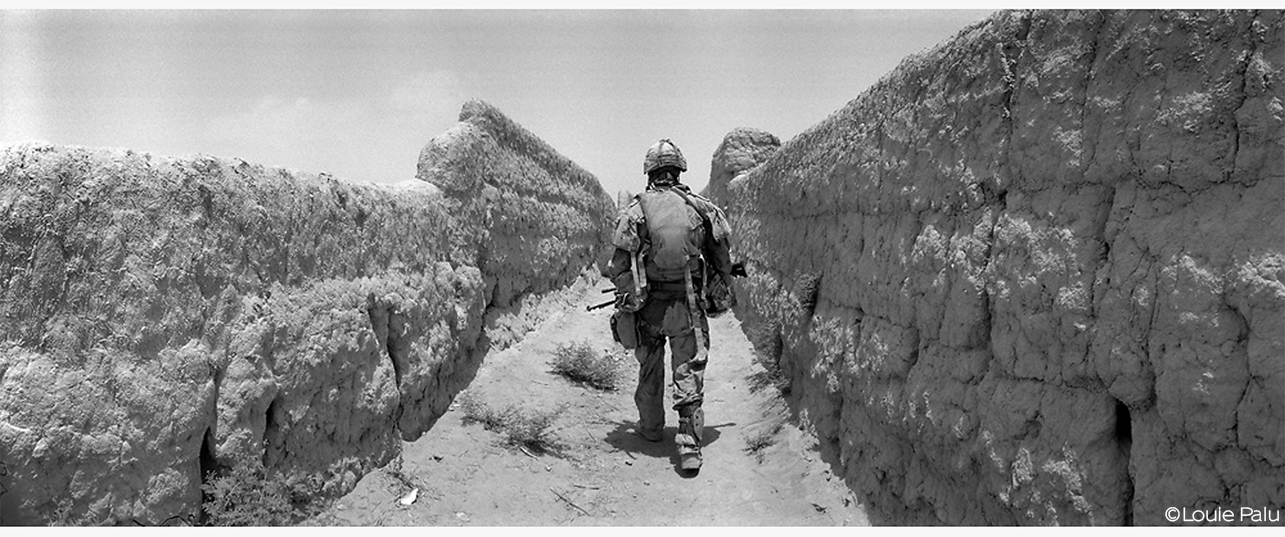
A Canadian soldier walks up a narrow path in what is known as “Route Nightmare” in a village in Kandahar, Afghanistan. The mud paths allow for easy planting of mines and road side bombs by insurgents. This image appears in the newsprint publication included in Front Towards Enemy.
Today, at a time when it’s possibly never been harder to do this job, which has never been “easy,” I’m often reminded of the fact that these Photographers have often turned their lenses to other subjects. Basically, they’ve turned them everywhere their lives took them, capturing a very broad range of the human experience in the process. Robert Capa also Photographed Picasso frolicking on the beach, Susan Meiselas captured Carnival Strippers and the secret world of an NYC S&M club, Mr. Palu’s fellow Canadian, Larry Towell, Photographed the Mennonites, and so on. Yet, because they were, also, present in war, and somehow managed to capture remarkable Photographs in the heat of those moments, their conflict images have become part of history- they are the ones these great Photographers have, largely, become best known for.
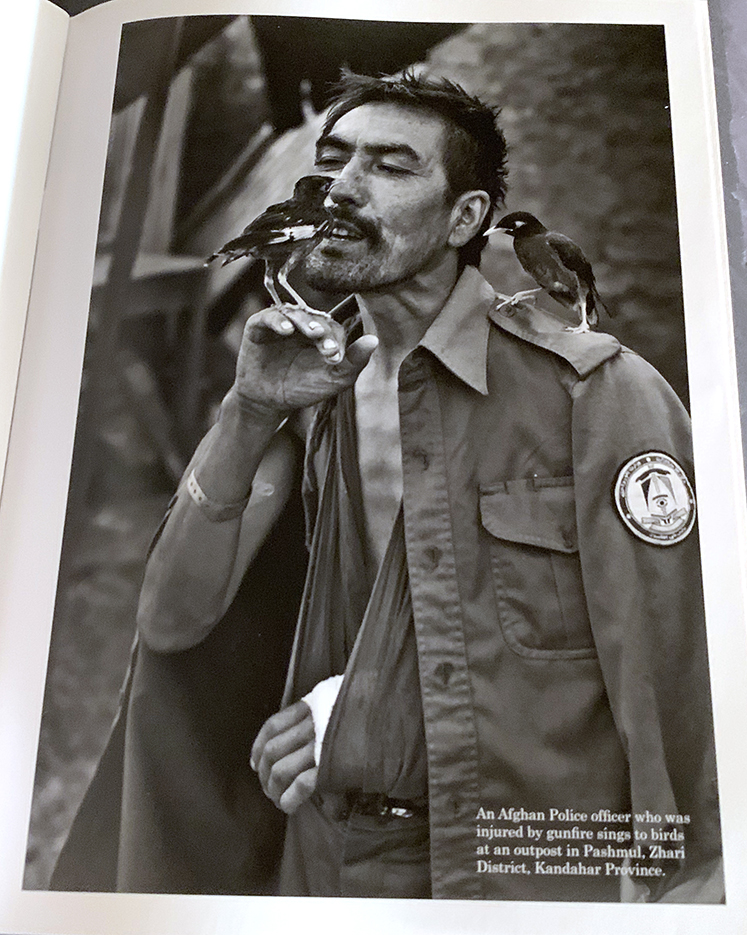
The caption reads, “An Afghan police officer who was wounded by gunfire sings to birds at an outpost in Pashmul, Zhari District, Kandahar Province,” from Front Towards Enemy. There is a timeless quality to this image that, save for the arm badge, could have been taken in any war.
Though Louie Palu spent five grueling years in Afghanistan covering the war from 2006-10, which resulted in the thousands of Photographs and the award winning documentary, Kandahar Journals, he’s also created important work on a number of subjects away from war. That might be why Mr. Palu refers to himself, simply, as a “photographer.”
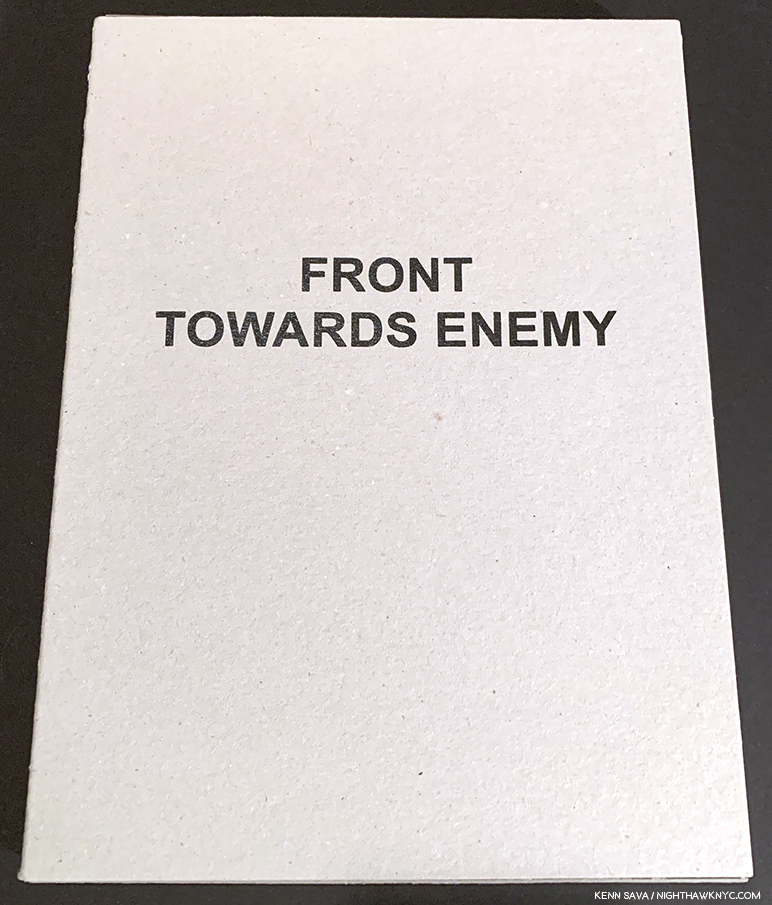
Front Towards Enemy is published in an edition of 750 copies by Yoffy Press, it contains about 60 Photographs and an essay by Rebecca Senf.
Still, I was unfamiliar with Mr. Palu until PhotoBook guru Jackson Charles pulled my coat to the Yoffy Press table in the PhotoBook Publisher’s area at AIPAD in April telling me I “HAD to see” Louie Palu’s latest two books, which Yoffy had just published. As usual, he was right. I was immediately engrossed in his Front Towards Enemy and A Field Guide to Asbestos.
The design of each may gain your immediate attention (the former, which comes in a slip case/wrap that when opened reveals a variety of elements inside to be explored in any order the reader chooses, (a bit like Chris Ware’s Building Stories).
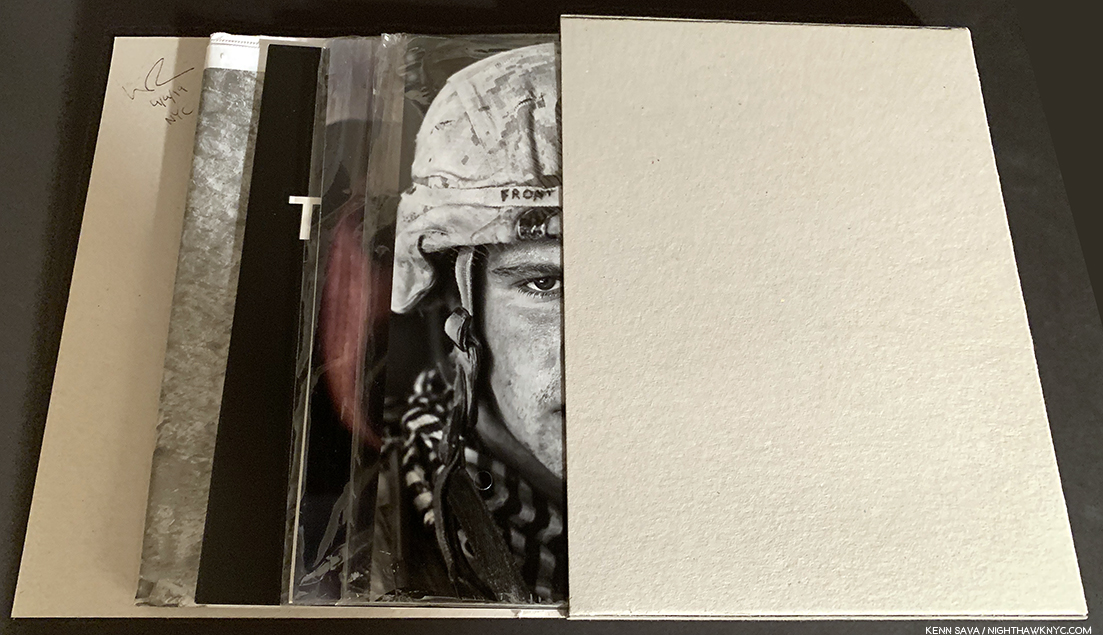
Front Towards Enemy’s slipcase opened to reveal its four components- a packet of soldier portraits, top,, an accordion fold image set, next, staple-bound zine and a newsprint publication, under. The entire publication can also exist as a pop-up exhibition. This copy is signed on upper left of the inside flap.
And the latter who’s front and back covers suddenly reappear in the center of a book that tells the rending story of two Canadian brothers who each died from mesothelioma after years of working in asbestos mines), but it is the depth of the dedication to the stories each contain that makes them unique & powerful. The first printing of A Field Guide to Asbestos almost immediately sold out.
In addition to being an extremely moving account of the lives of its two subjects, it’s, unfortunately, one of the very rare books (let alone PhotoBooks) about the epic and continuing Asbestos crisis.
Mr Palu happened to be sitting a few feet away at Yoffy’s table, so my first impression of his work was still flooding my brain as I spoke with him. In the succeeding weeks, he graciously found time in a very busy schedule and full life to answer some questions for me. Given that not nearly enough has appeared in the media about Front Towards Enemy and A Field Guide to Asbestos– two of the more compelling and important PhotoBooks of the past year in my view, I’m happy to be able to bring my Q&A with Louie Palu to you here.
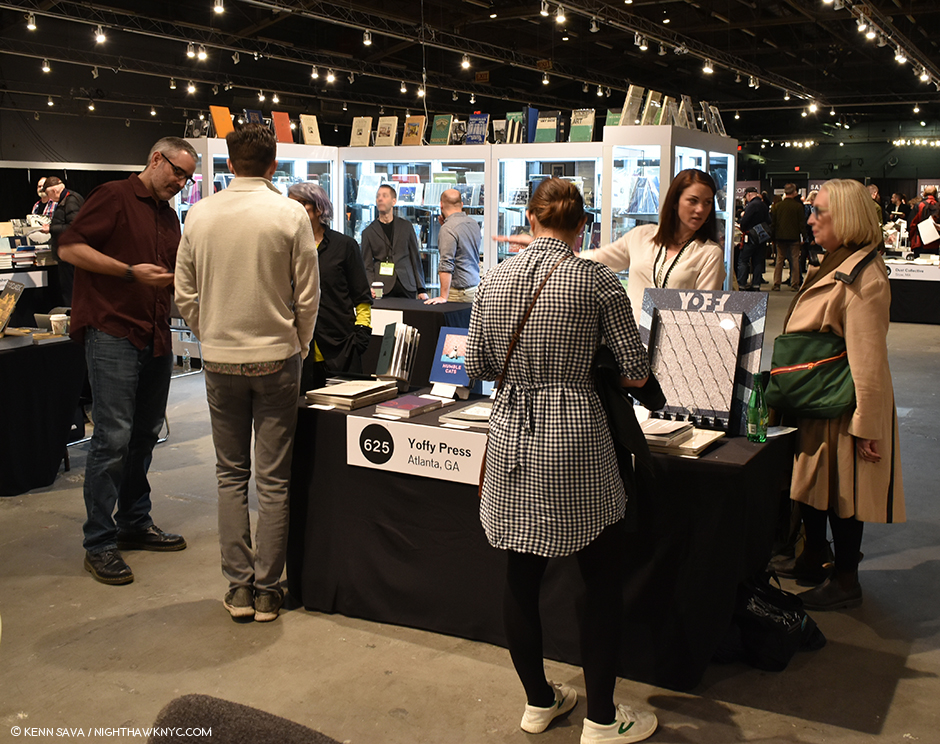
Louie Palu, standing left, at the Yoffy Press table in the PhotoBook Publishers section of AIPAD, April, 2019.
Though I always do my own research, here is one time I find it hard to top Wikipedia’s first line as a succinct introduction to Louie Palu- “Louie Palu, RCA, (born 1968) is a Canadian documentary photographer and filmmaker known for covering social-political issues, including war and human rights,” it reads. The RCA is Royal Canadian Academy of Arts, to which Mr. Palu was inducted in 2014. His work has appeared extensively in publications throughout North America and Europe including The Globe and Mail, Toronto (where he was on staff for 6 years) to The New Yorker, The Wall Street Journal, USA Today, The Washington Post, The New York Times, Newsweek and The Atlantic.
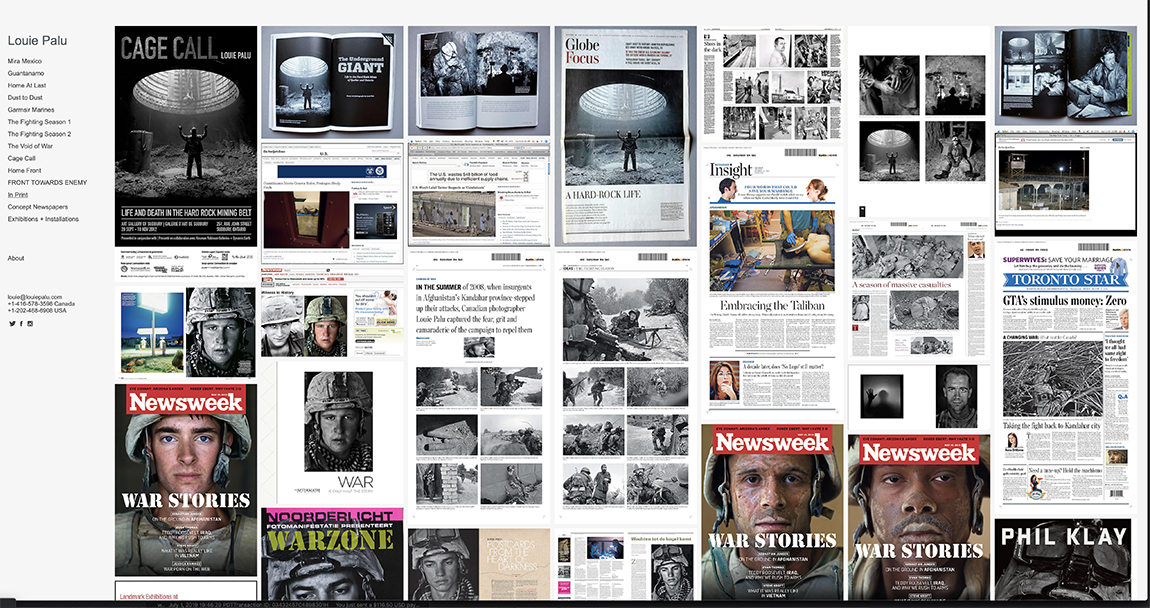
A screen shot of the “In Print” tab on Louie Paul’s site shows only a few of Mr. Palu’s images in print. As you scroll down the page, the powerful images just keep loading…
So, it’s highly likely his work is familiar to you even if his name is not. He’s been exhibited by the Canadian War Museum and was included in the important show War/Photography: Images of Armed Conflict and Its Aftermath at the Museum of Fine Arts, Houston that travelled to Los Angeles, Washington and the Brooklyn Museum in 2012. He’s been honored with the Hasselblad Masters Award and Canadian Photojournalist of the Year Awards, both in 2008, a 2013 Pictures of the Year International Award and has received a Pulitzer Center for Crisis Reporting grant and a 2016 Guggenheim Foundation Fellowship.
His dedication and commitment to the issues he’s covered can be seen in the fact that a number of the projects he’s undertaken have lasted over a decade. To date, he’s focused on five- The Canadian Hard Rock Mining Belt, Guantanamo Bay, the Mexican Drug War, Kandahar, Afghanistan, and Asbestos. Counting the two new releases I mentioned, he has now released five PhotoBooks, with, first, Industrial Cathedrals of the North; second, Mirrors of Stone: Fragments from the Porcupine Frontier, and third, Cage Call: Life and Death in the Hard Rock Mining Belt (all three with Charlie Angus), preceding his two new books. In 2015, after a very successful kickstarter campaign, he released the documentary Kandahar Journals, in which he is featured, as well as co-directed and produced.
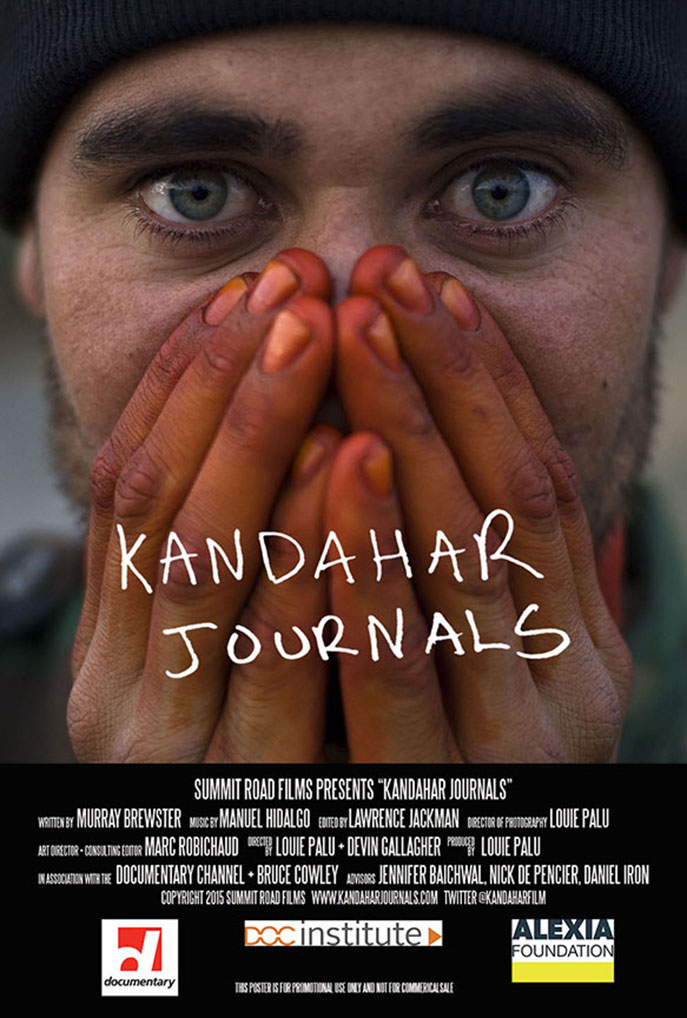
That’s not blood. The caption on this photo when it appeared in Front Towards Enemy reads, “An Afghan soldier warming his henna stained hands…” The poster for Kandahar Journals, 2015, featuring, co-directed by and produced by Louie Palu.
In Kandahar Journals, Louie spoke about what inspired him to cover war. “My reason for covering the war is related to my family history,” he said. “As a child my parents told me many stories about the war (in Italy in World War II) around the kitchen table. Their traumatic experiences have shaped who I am. One of the stories my father told me was watching his own father being taken away by soldiers at gunpoint. I needed to understand what he understood.” Louie went to Afghanistan, following US, Canadian and Afghan troops and American Medics (including going on 150 medevac missions with the 101st Airborne in 2010). He decided to take a different approach than those reporters who spent short periods there. Instead, he spent five years.
Why did he chose this approach, and stay that long? He explained in an interview last year-
“I think there probably isn’t a single person in this room who wasn’t effected by 9/11 and I think that that was sort of the foundation of it, but it didn’t drive me to want to go there yet. When I got there I realized I couldn’t cover the war in the way I thought it should be covered (staying there for a short period)…I wanted to do a long term study. I wanted to keep looking at something over and over and over and over again because I think that things reveal themselves if you look at them over time.” He decided to leave his staff job, go out on his own, and return there. “I’m gonna stay here,” he continued. “When I figure out the story, then I’ll report it. I did sell stuff sort of on a per story basis. But over the years as the pictures started coming together, they started telling a new story, they started explaining things more than just the bombings and the bodies, they started explaining the culture, the place, its history, and I really think it became a unique story, a unique dialog about the place.”
The pictures and the story did come together, in Kandahar Journals, and in the PhotoBook, Front Towards Enemy, released last fall, after many of his images from the war had appeared in numerous news outlets. Kandahar Journals is described as “the story of a photojournalist who reflects on the events behind his psychological transformation,” according to its site. It won the Dziga Vertov Award for Best Documentary Feature, 2017. When I saw it, I was struck by stylistic echoes of Apocalpyse Now. Mr. Palu’s voiceover, often reading from his journals, are reminiscent of Martin Sheen’s Captain Willard’s voice in the Francis Ford Coppola epic, but the whole effect of Mr. Palu’s documentary is also a journey into “the heart of darkness” not unlike that taken by Sheen’s Captain Willard, though here also we see him return from the war. Whereas Francis Ford Coppola was showing us a drama based on Joseph Conrad’s Heart of Darkness, Mr. Palu’s doesn’t have a fictional moment in it. The film wonderfully alternates Mr. Palu’s still Photographs, often seen in montage, with moving images, many taken in active combat situations. Known to this point for his still work, his and his team’s filmmaking show a flair for editing that is both taught and spontaneous. It deserves the kudos it’s received, and more viewers.
This fall, his work on the Arctic will appear in National Geographic, and his work has been selected to be included in the upcoming PhotoBook, On Death, by Jon Feinstein, Roula Seikaly in collaboration with the Humble Arts Foundation and published by Kris Graves Projects.
Kenn Sava (KS)- You’ve been involved in books about Canadian Mining and Miners, a book about the horrors of asbestos- a deadly product that just won’t go away, and, more recently, a film and book about your experiences in Afghanistan covering the war. What drives you? Where does it come from?
Louie Palu (LP)- All my drive comes from my emotional reaction to hearing my parents oral histories about the Second World War, poverty, workers and the experience of immigrants and refugees. My entire childhood neighborhood in the West side of Toronto is filled with a rich mix of migrant workers from the West Indies (mostly Jamaica), Italian, Bosnian, Crotian, Serbian, Indian, Irish and many more nationalities who came to Canada for a new start.
KS- The public sees the books and the films- the end results of mountains of long, hard effort. The tip of the iceberg. What’s it like being you? Can you give us a bit of a sense of what goes in to being able to make these projects and then make them into a book or film?
LP- I don’t look at what I do as a job. There are conventional work and job-like tasks, but I take it on as a way of living, thinking and feeling about the world and the people around me. These projects are all very hard, no matter how long I have done this (28 years since college). When I start them it’s a real challenge, like the Cage Call project on the mines, that was like being out of breath non-stop because I was young and did not know what I was doing. I failed so many times, but that is how I got to where I am now, that helped me set the bar higher and higher. The difference from my first 20 years at this, and now, is I have the experience and confidence to clearly understand my process and not be afraid of failure now. I enjoy the process more. I was also lucky to have a few mentors come along and show me the way. I can’t say enough postive things about everyone finding a mentor.
On being me… I like being alone. Though work can be very consuming at times, I have found the places I fit in and exist in when I am not doing photography are usually places and events that have nothing to do with photography. Some of these actitvities involve extreme music like hard core punk and death metal. Additionally, alternative versions of theater, music and art are also therapeutic. I love cruising used book stores, actually I love books and places that sell vinyl, comic books and seeing art house films. I am also very active, I run bike, bike and fish. I like being in the woods alot alone and camping.
KS- Was it hard to get the permissions you needed to be at the front documenting the war in Afghanistan for five years? Once you were there, was it hard to gain the acceptance of you and your cameras from the soldiers?
LP- It is hard to get access anywhere and always has been. My first project when I was 16-years old was on homelssness in the 1980’s in the East end of Toronto. I recall getting hit in the face by someone who did not want to be photographed on my first day on the street, I got some hard lessons early on. It can be hard to get access to politicians. Actually, that’s probably harder than getting access to a war zone. I have always figured out access and built relationships well with who I was photographing. Many of my indirect teachers for my values, after my parents, were the work of photographers like Peter Hujar, Mary Ellen Mark, Don McCullin, Susan Meiselas, Eugene Smith and many more.
KS- How did your years in Afghanistan change you? Did you suffer any of what many soldiers have coming back to Canada and United States in adjusting?
LP- Afghanistan was life changing. Everyday I wake up I am pretty positive. Afghanistan set a bar for me, which is if there are no suicide bombings, land mines to step on and I still have my legs I have nothing to complain about. I certainly struggled hard when I got home, but I rallied because I had good friends who made me go to therapy. Helping people can give you a sense of purpose, being a good person can help you help yourself.
KS- Front Towards Enemy is certainly a unique concept for a “photobook.” Why did you decide to make it this set of multiple parts, in different formats and on different papers, so the reader could put it together however they wished?
LP- FTE is a deconstructed book, it can be taken apart and re-edited by the viewer. I think its good for readers of the news to understand process and editing. Photo editing is a key part of what we see and don’t see, thats what FTE is after, which is participation of the reader. FTE came out in the wake of and is part of a series of self published newspapers on the same concept. They are Mira Mexico (Mexican drug war) 2013, Guantanamo Operational Security Review 2014, Federal City (political identity in Washington DC) 2017. They can all be seen on the Photoeye website.
KS- With Kandahar Journals, released in 2015, you’ve added film to your photographs. Images from the film appear, also, in Front Towards Enemy. When did your film work begin? It seems like it must be hard to know in advance which camera to pick up since you can only guess what is about to happen, and the unexpected certainly happens all the time. Is this where your experience comes in, or do you prefer to stick with still photography for some things and film for others?
LP- I have always been interested in the moving image. I obssessed over several films as a child and felt that cinematography has an experiential quality that still photos do not, neither is better than the other. I think I watched Apocalypse Now fifty times (the original version is still the best), mostly because Vittorio Storaro and the soundtrack created this psychological space for Francis Ford Coppola’s directing that was rare in films. I never have a problem with which camera to use, I go by what I feel I should use. I have since made a short film on Ukraine and am now making a feature version of it among 3 films in development.
KS- A Field Guide to Asbestos is one of the most grimly intense, and, unfortunately, still timely books I’ve seen recently. With reports this month in the NY Times and elsewhere about asbestos possibly making a comeback, it’s a book more people need to know about right now. How did it come about? What’s it going to take for the world to finally get rid of it, once and for all?
LP- Sadly asbestos still exists and is used in homes and many other materials around the world. If you all only knew what I know, you would be horrified how this material is still very much everywhere. I think bans can be overturned, because they are usually writing. But photos of horrors are tools of remembrance. If we have books, photos and documents that are artifacts and evidence of what it does and people see them enough it will be hard to forget. This book came about because I began to hear the talk amongst some US policy makers that asbestos could be something that could be used again in construction.
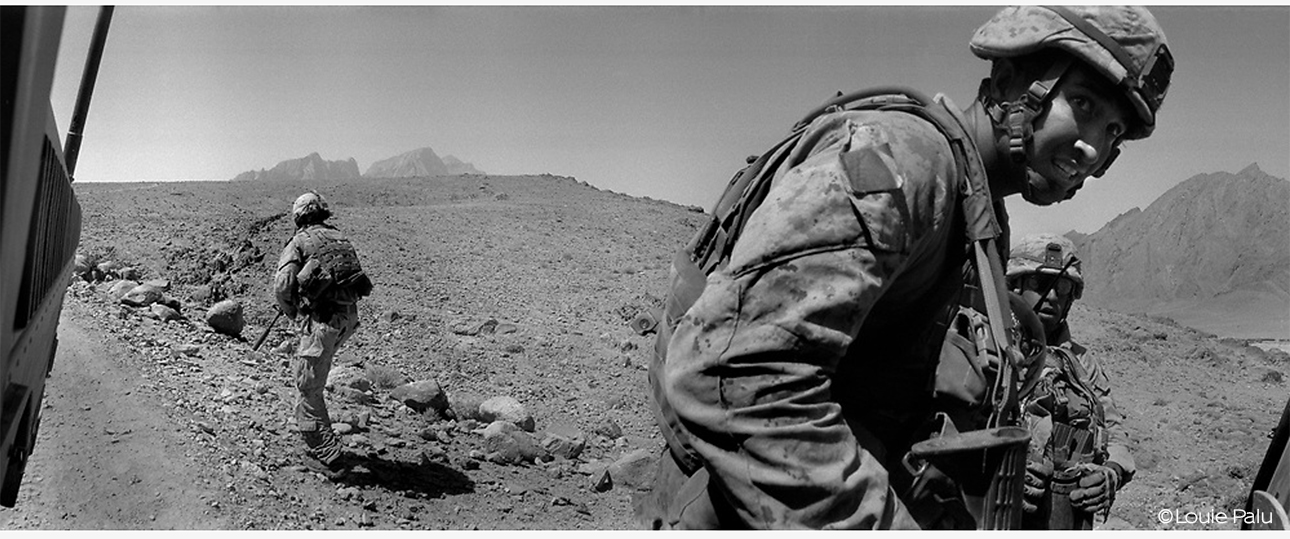
The caption, which reads in part, “U.S.soldiers under rocket and small arms fire from insurgents…” neglects to mention that the Photographer, Louie Palu was, as well. From the newsprint publication in Front Towards Enemy.
KS- We live in a time where the truth is under attack, as the essay in Front Towards Enemy points out, and it’s, also, increasingly hard to do what you do- be a journalist/photojournalist/documentarian. What can readers do to help you and the others?
LS- Go to the website for the Commmittee to Protect Journalists and read the stories of journalists being jailed, murdered or attacked just for reporting the news. Help yourself understand and imagine what your mind would be like without a free press so that you could be informed on everyting from vaccinations to human rights or simply even a warning that some of the food you purchased has a serious health related issue or there is a rapist in your community. We would all be blind and worse off.
I met a person at a film festival recently who did not know what D-Day was, imagine if we start forgetting about the Bill of Rights and the Constitution? We would be a nation with no moral compass. The press is a key tool of oversight and a platform so that we don’t lose our way entirely, or at all.
Q&A Ends.
Can a PhotoBook change the world? It seems to me that Photographers like Louie Palu can make the pictures, get them published, and once in a while make PhotoBooks of them. It’s up to those who see them to take things from there.
BookMarks-
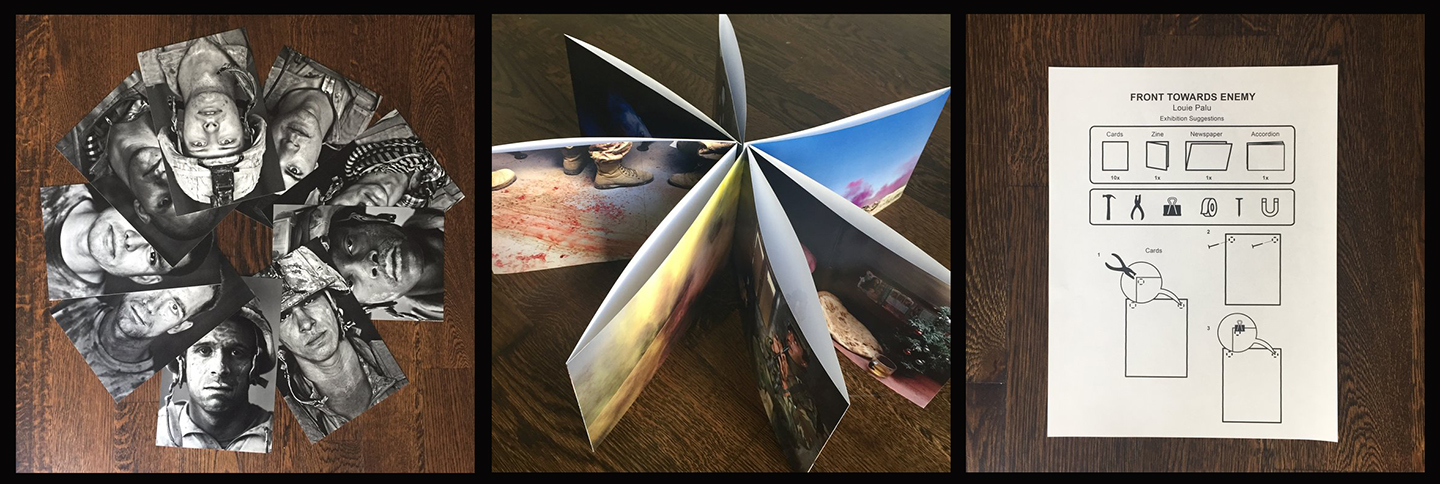
From Front Towards Enemy– the soldier portrait cards, the accordion fold image set and exhibition suggestion card, left to right. Photos by Yoffy Press.
Front Towards Enemy, was published by Yoffy Press in October, 2017 in an edition of 750 copies. Inside it’s cardboard slipcase are four components- a set of soldier portrait cards, an accordion fold image set, a newsprint publication, and a staple-bound zine. The entire publication can also exist as a pop-up exhibition, per the enclosed “exhibition suggestions.” It includes about 60 images and an essay by Rebecca Senf. It may be purchased here.
The first edition of A Field Guide to Asbestos sold out after its publication in April, 2019. A second edition is currently available. It’s a softcover of 72 pages, and is available here. You can get a $15 discount if you buy both, as I did, here.
Kandahar Journals is a first hand look at Louie Palu’s experiences in Afghanistan. What more need I say about it?
Lesser known (and not counted in the five books I mentioned earlier) are two additional newsprint publications self-published by Louie Palu, Mira Mexico, 2012, and Federal City, 2017, both 32 pages. The former consists of a group of his Photographs on the Mexican drug war, while Federal City, a haunting publication that looks at the “other Washington,” those who have no direct connection with the Federal government. Since they are not bound or stapled, both publications may be pulled apart and perused in any order the viewer chooses. Personally, I find both compelling and Federal City exceptional. As I write this, both are available through Photo-eye.
For further reading, Photojournalists on War: The Untold Stories from Iraq, by Michael Kamber, though about the war in Iraq, not Afghanistan, is an unprecedented collection of interviews with some of the other leading Photojournalists of our time, including two who were killed in conflicts after being interviewed. It’s a book I find impossible to put down after I pick it up, and its large size brings the words home with full size photographs reproduced throughout. An extraordinary, highly recommended book. I bought mine from Quinn and Tom of Housing Works Bookstore, who I thank.
*-Soundtrack for this Post is “I Believe In Miracles” by The Ramones from Brain Drain, 1989-
My thanks to Louie Palu and Jackson Charles.
My previous pieces on AIPAD 2019 are here, and on Photography are You can
NighthawkNYC.com has been entirely self-funded and ad-free for over 6 years, during which over 250 full length pieces have been published. If you’ve found it worthwhile, you can donate to keep it going & ad-free below. Thank you!
Written & photographed by Kenn Sava for nighthawknyc.com unless otherwise credited.
To send comments, thoughts, feedback or propositions click here.
Click the white box on the upper right for the archives or to search them.
For “short takes” and additional pictures, follow @nighthawk_nyc on Instagram.
Subscribe to be notified of new Posts below. Your information will be used for no other purpose.













